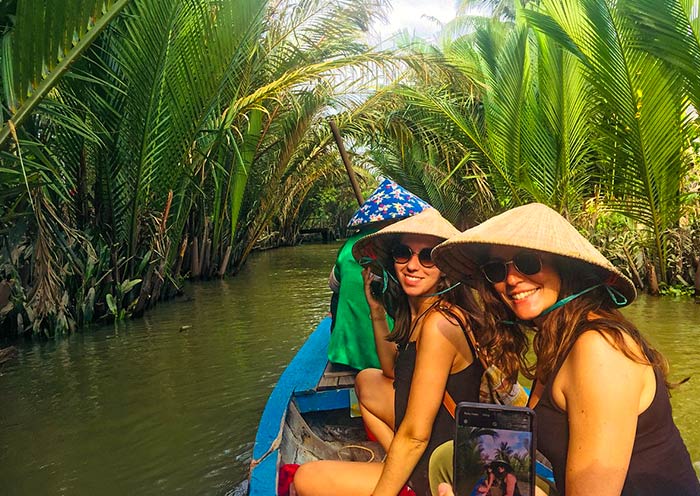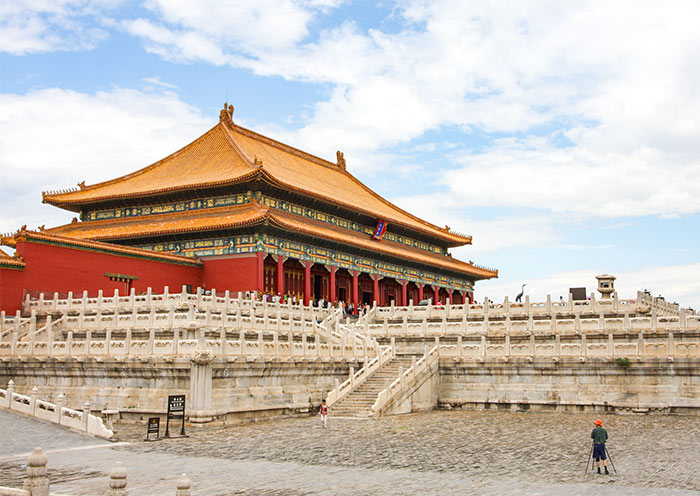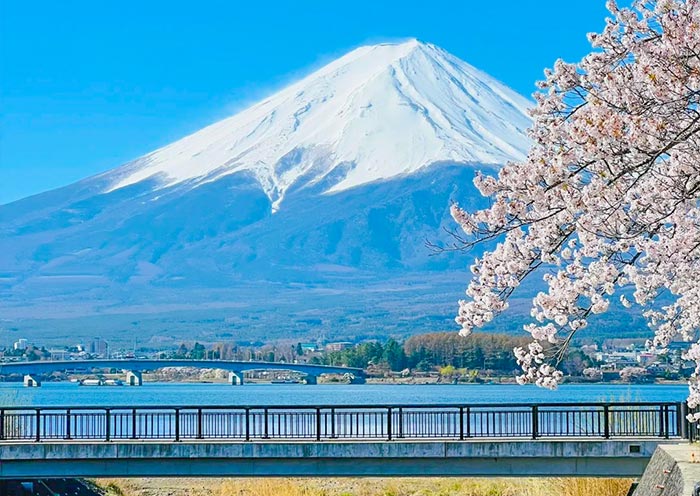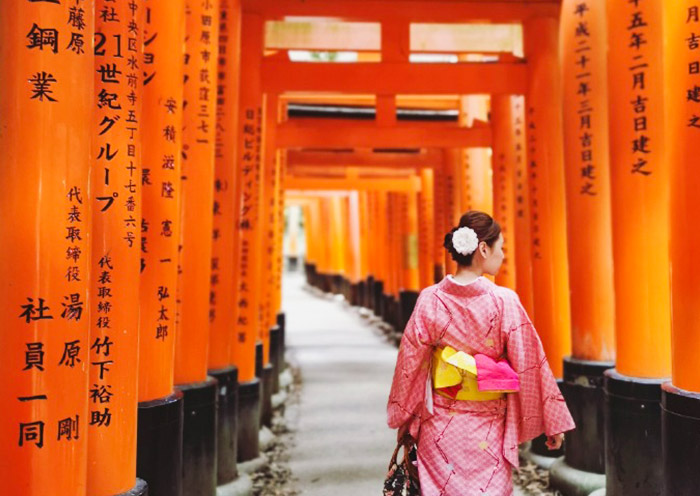26 Days In-Depth Vietnam China Japan Tour: Ultimate Asia Contrast
- Highlights
- Itinerary
- Price
- Trip Notes
- Accommodation
- Photos
- Reviews
Cultural & Natural "S" Curve through Vietnam, China, Japan
Experience Asia's Ultimate Cultural & Natural Contrast? Then take a super amazing "S" turn to 3 Asia countries. Join our 26 Days Vietnam, China, Japan Tour—a journey from Vietnam's slow pace and street vitality to China's grandeur and rapid development, and finally, to Japan's exquisite refinement and order.
1-9 Days in Vietnam: Starting in bustling Ho Chi Minh City, you will delve into wartime history and take a boat trip through Mekong Delta. Next, explore Sino-Japanese-Vietnamese architecture of the UNESCO Hoi An town. You'll tour temples and museums of the capital Hanoi, then cruise oceanic karst beauty of Halong Bay.
10-19 Days in China: Heading North, the supremely futuristic Shanghai awaits you, its towering skyline striving ceaselessly to touch sky. Next, turn towards incredible Zhangjiajie "Avatar" mountains. Finally, delve deep into the sources of Chinese civilization by visiting Xi'an Terracotta Warriors and Beijing's Forbidden City and Great Wall.
20-26 Days in Japan: Head East to Osaka and fully enjoy local vibrancy and delicious cuisine. World Heritage sites like Kinkakuji, Kiyomizu-dera, and Todai-ji in Kyoto and Nara, along with playful deer, will make your exploration fun. At Mount Fuji, admire the landmark from the 5th station or Kawaguchiko. Back in Tokyo, experience Shinto traditions and Buddhism at Meiji Jingu and Sensoji Temple.
We have local five-star service in Vietnam, China, and Japan. This tour is designed for the most logical route with no backtracking and worry-free Visa arrangements, maximizing your time. When would you like to depart?
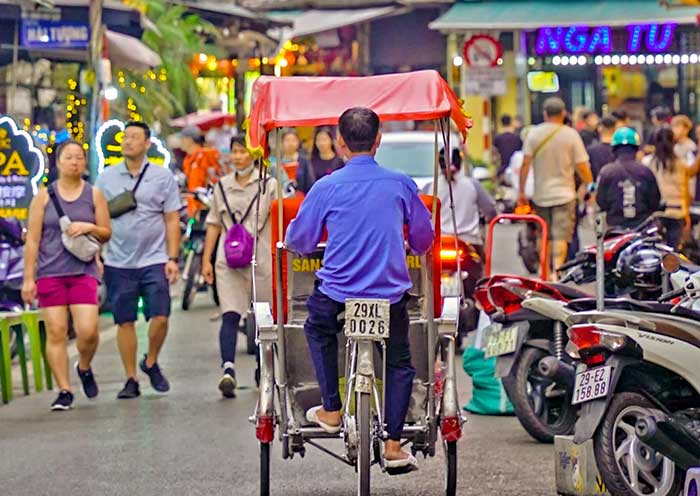
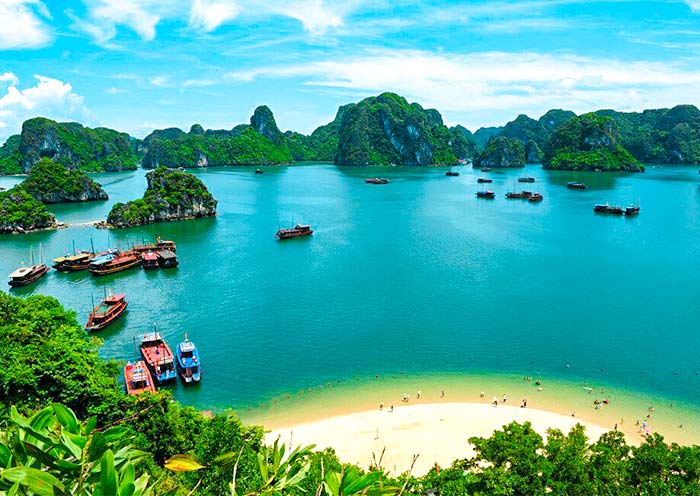
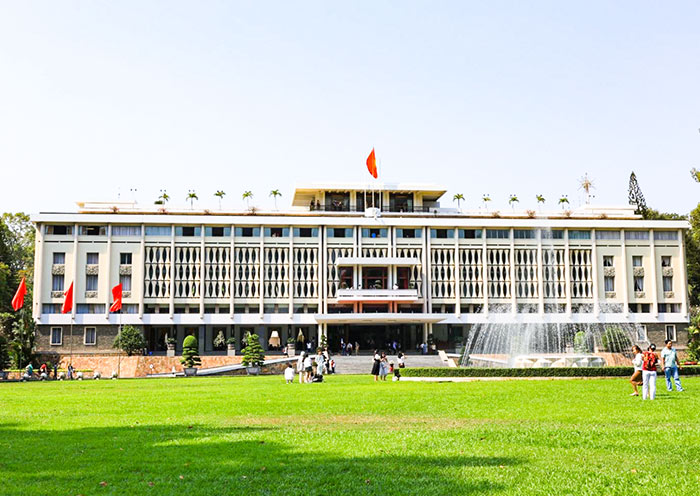
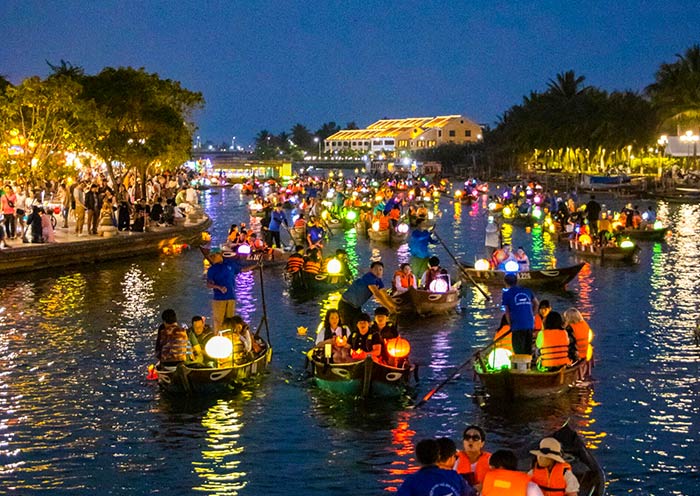
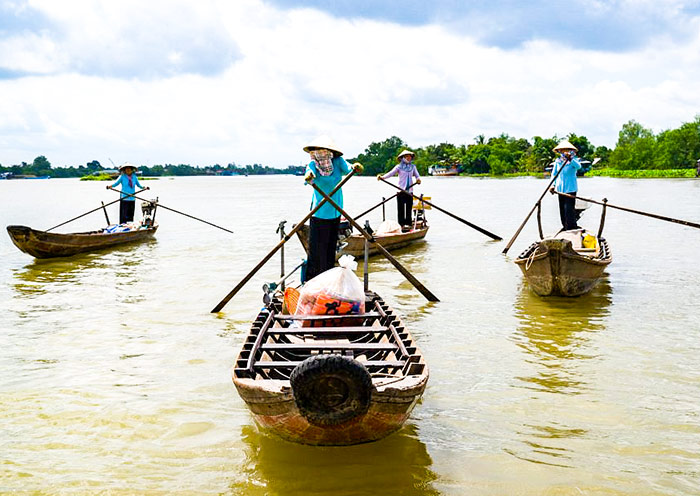
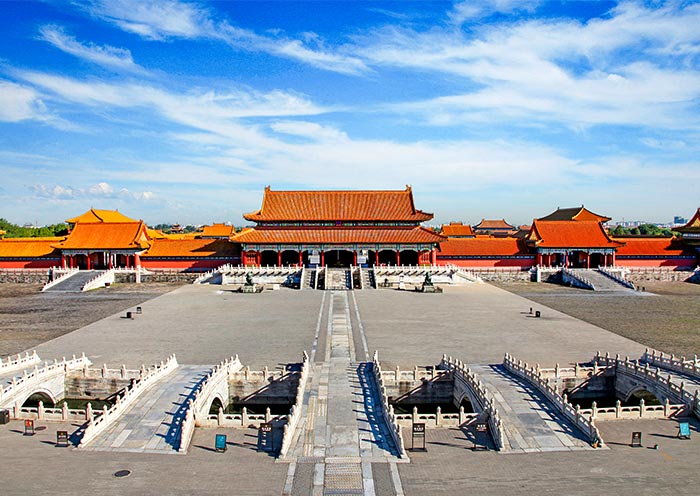
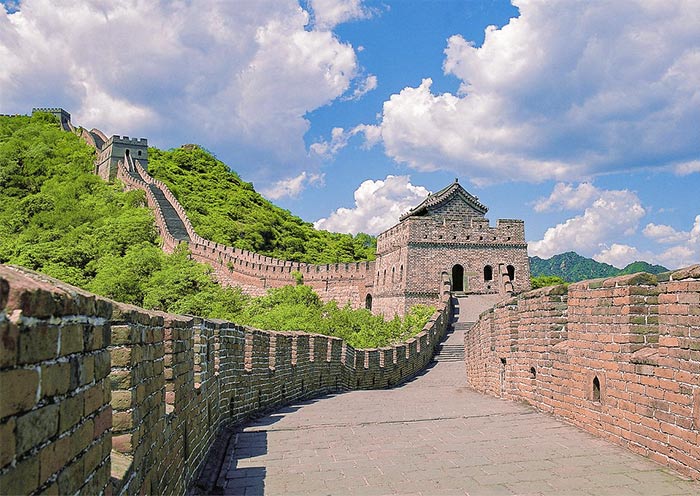
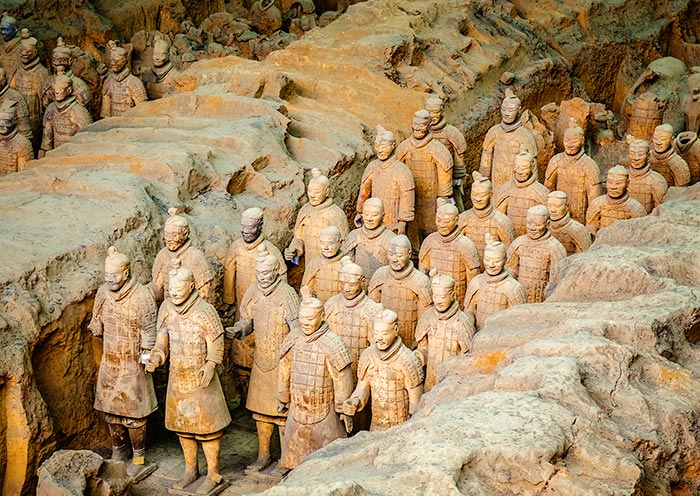
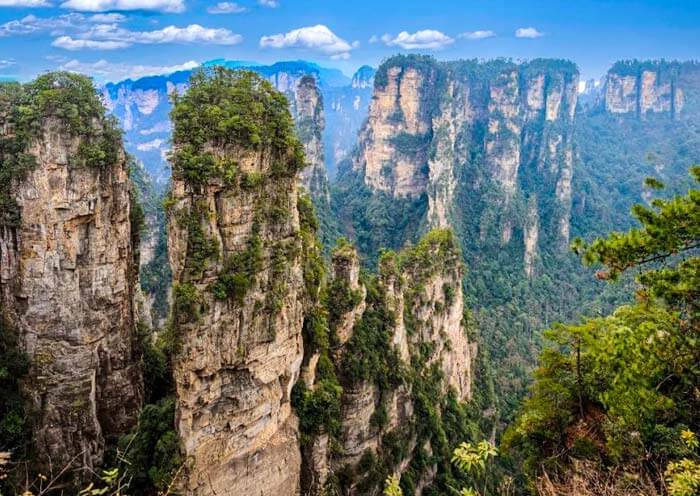
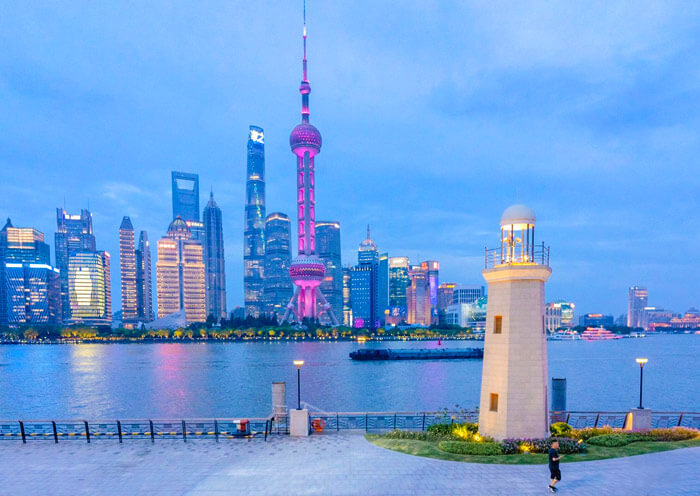
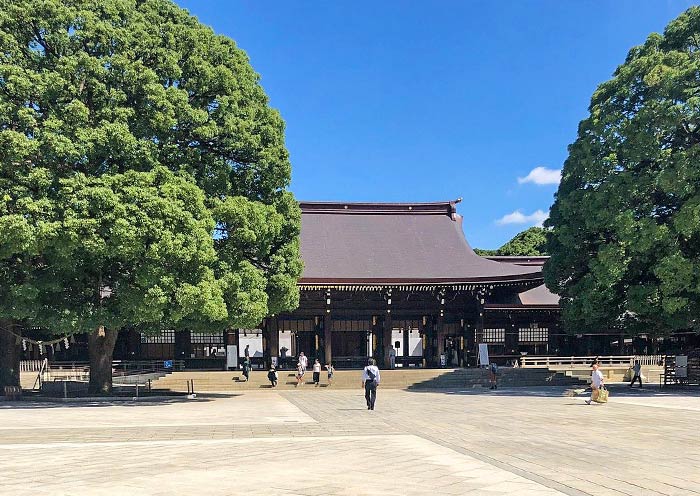
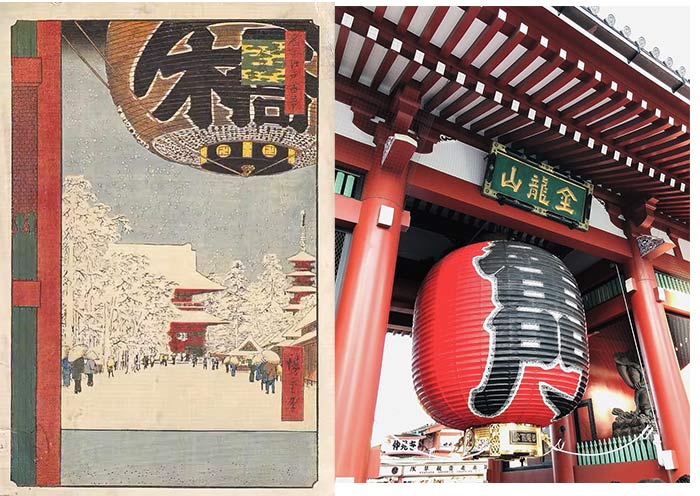
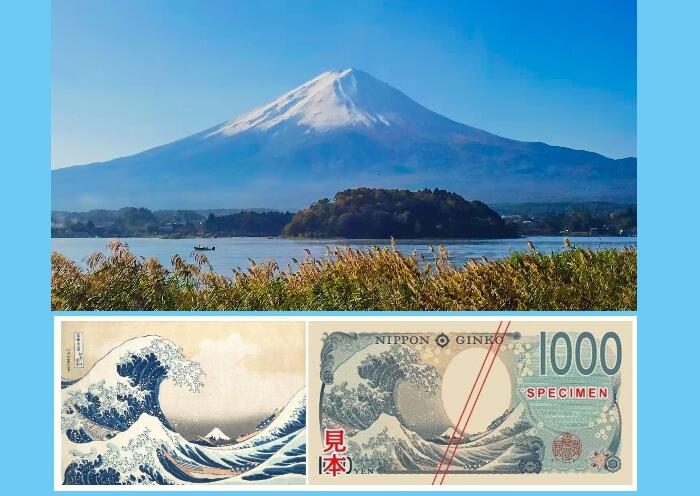
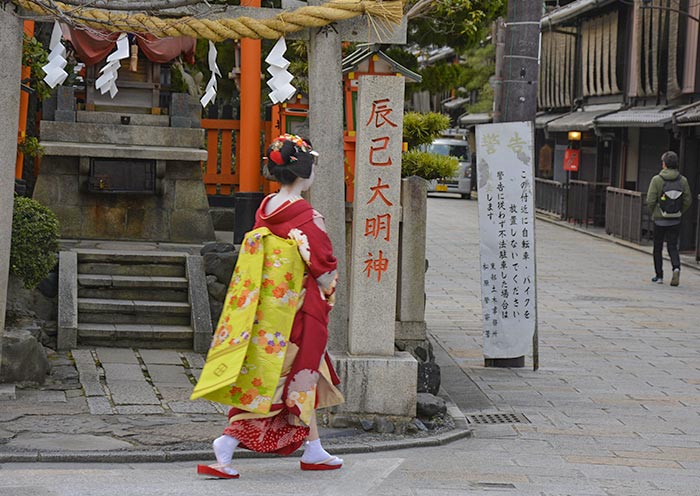
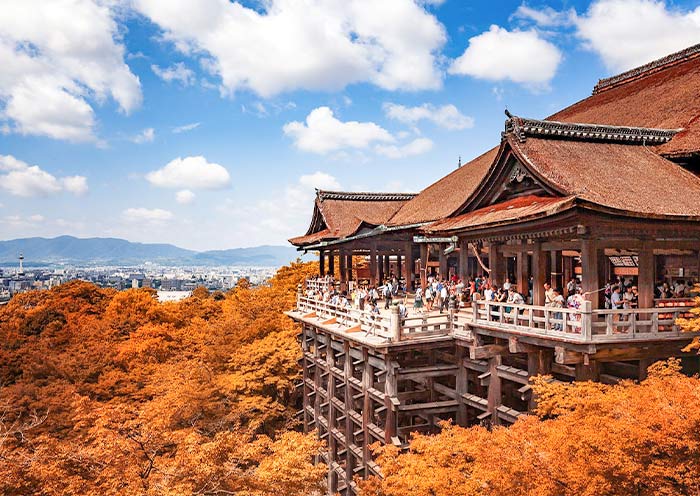
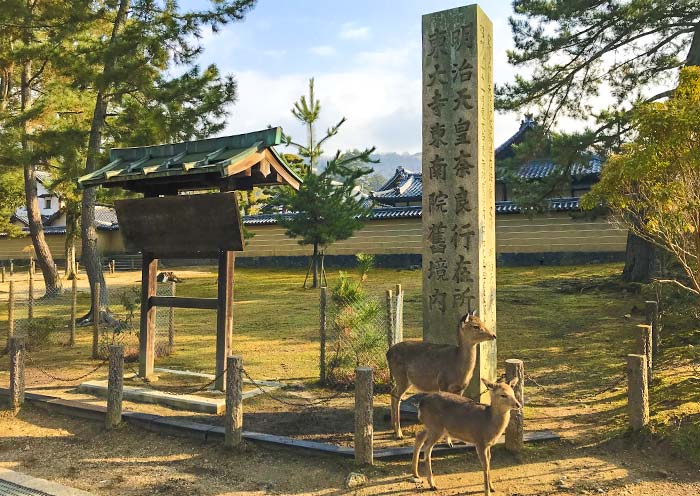
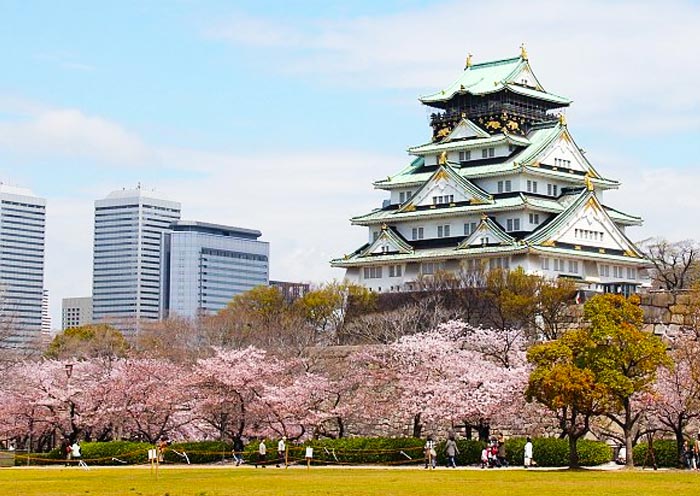
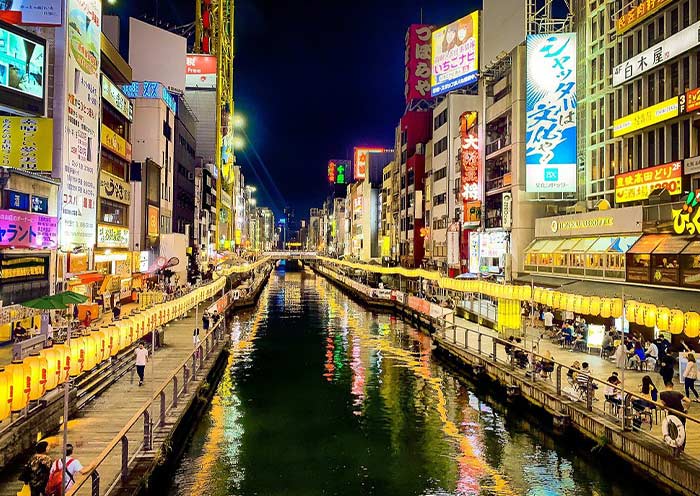
Itinerary at a Glance
Ho Chi Minh City (1.5 Days)
Cu Chi Tunnels, Reunification Palace, War Remnants Museum, Central Post Office
Mekong Delta (1 Day)
Vinh Trang Pagoda, My Tho boat trip, Ben Tre boat trip & cycling tour
Da Nang (0.5 Day)
Fly to Da Nang from Ho Chi Minh
Hoi An (1 Day)
Hoi An Ancient Town, Cam Thanh coconut basket boat trip
Hanoi (2 Days)
Tran Quoc Pagoda, Ho Chi Minh Mausoleum, One Pillar Pagoda, Temple of Literature, Vietnam National Museum of History, Hoan Kiem Lake, cyclo tour to old quarter
Halong Bay (1.5 Days)
Halong Bay, Halong Bay Cruise, Visit Sung Sot Cave, Titop Island, Trinh Nu Cave
Shanghai (2 Days)
Shanghai Museum, Yu Garden, The Bund, Nanjing Road, Shanghai Tower
Zhangjiajie (3 Days)
Wulingyuan Scenic Area, Yuanjiajie, Tianzi Mountain, Tianmen Mountain, Zhangjiajie Grand Canyon Glass Bridge, Baofeng Lake
Xian (2 Days)
Terracotta Warriors, Ancient City Wall, Bell Tower (or Drum Tower), Giant Wild Goose Pagoda, Muslim Quarter
Beijing (4 Days)
Forbidden City, Mutianyu Great Wall, Tian’anmen Square, Summer Palace, Bird’s Nest and Water Cube
Osaka (2 Days)
Osaka Castle Park, Shinsaibashi-suji Shopping Street & Dotombori District
Japan Nara (0.5 Day)
Todaiji Temple (World Heritage), Nara Park
Kyoto (2 Days)
Kinkakuji Temple (World Heritage), Nishiki Market, Gion, Yasaka Shrine, Ninenzaka & Sannenzaka, Kiyomizu-dera Temple (World Heritage), Fushimi Inari Taisha Shrine
Mt. Fuji (1 Day)
View Mt. Fuji (World Heritage), Mount Fuji 5th Station, Lake Kawaguchi, Kubota Itchiku Art Museum, Tenjo-san Park Cable Car or Lake Cruise
Tokyo (1.5 Days)
Meiji Jingu Shrine (Meiji Shrine), Shibuya Crossing, Senso-ji Temple (Asakusa Kannon Temple), Tsukiji Outer Market (Tsukiji Fish Market)
Itinerary Day by Day
Welcome to Ho Chi Minh City! Formerly known as Saigon, Ho Chi Minh City is the largest city in Vietnam. Located in southern Vietnam, it's a well-blended mix of historical significance and modern dynamism.
Upon arrival at Tan Son Nhat International Airport in Ho Chi Minh City (approximately 6.5km from downtown), your local guide will meet you and escort you to your hotel. The rest of today is free for you to explore the city on your own.
Vietnam Ho Chi Minh City Arrival Ideas:
Ho Chi Minh City serves as another important gateway city to Vietnam, offering convenient access for travelers. You can easily reach Ho Chi Minh City by air from Southeast Asia cities like Bangkok, Phnom Penh, Siem Reap, and Vientiane, as well as major hubs like Manila, Tokyo, Seoul, Singapore, and Kuala Lumpur. Domestic flights within Vietnam operate from cities such as Hanoi, Da Nang, Dalat, Hue, and Nha Trang and others.
Free Time Activities in Ho Chi Minh City:
Immerse yourself in Saigon's famed coffee culture at the Coffee Apartment, then be captivated by the vibrant atmosphere of Ben Thanh Market. Explore a world of local crafts, and tantalize your taste buds with the incredible array of Vietnamese street food - a sensory explosion you won't forget!
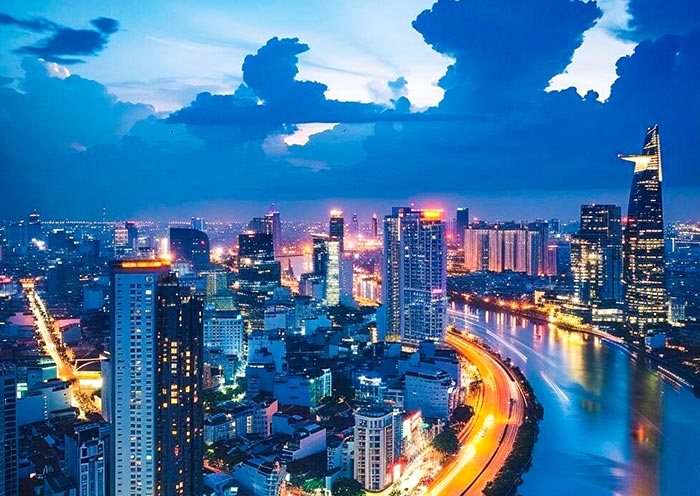
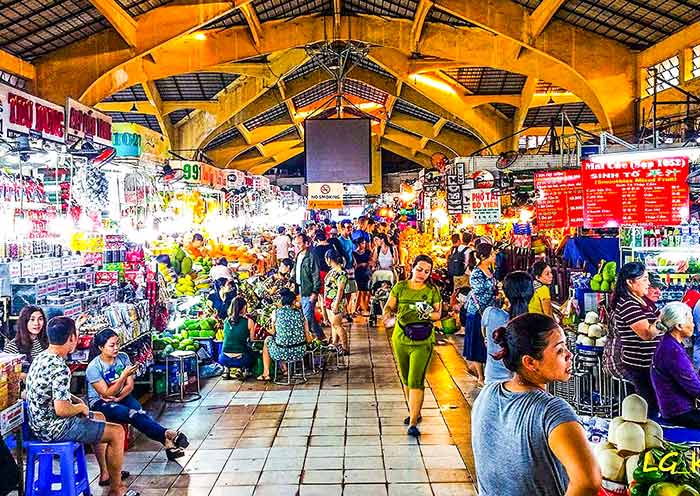
After breakfast, after a comfortable 1.5-hour drive, you will arrive at the Cu Chi Tunnels. Here, you and your family will have the opportunity to explore the intricate tunnel system, which consists of narrow passageways, hidden entrances, and underground chambers. Your guide will share insights into the daily life of the Cu Chi guerrilla fighters and their remarkable ability to survive within the tunnels. Prepare to crawl through sections of the tunnels that were used during the Vietnam War. You will see firsthand the kitchens, living quarters, and other essential spaces built underground. Additionally, you will visit weapon rooms and discover how these resourceful soldiers crafted their tools.
After the tour, return to Ho Chi Minh City for a half-day city tour to explore Ho Chi Minh City's rich history, culture, and vibrant modern life.
Our first stop is the Reunification Palace, also called the Independence Palace, a captivating architectural marvel that once served as the residence of the South Vietnamese President. Here, you can witness the iconic image of North Vietnamese tanks storming the palace gates, a defining moment that marked the end of the Vietnam War in 1975. Next, we head to the War Remnants Museum, a poignant and powerful testament to the realities of the Vietnam War. Prepare to be moved by exhibits showcasing artifacts, photographs, and weaponry that tell stories of war and resilience.
Next on your itinerary is Nha Tho Tan Dinh, also known as the Pink Church. This vibrant landmark stands out with its unique hue, making it instantly recognizable and a popular spot to capture stunning photos. Step back in time as you learn that Nha Tho Tan Dinh was built in the late 19th century, making it one of the oldest churches in Ho Chi Minh City. Admire the fascinating blend of Romanesque and Gothic styles in its architecture, with two grand bell towers flanking the entrance. Snap some cool pictures outside to remember your visit!
Afterwards, head to the Jade Emperor Pagoda, a vibrant temple dedicated to the supreme deity in Taoism, the Jade Emperor. Here, you can marvel at colorful statues, intricate carvings, and exquisite woodwork that adorn the pagoda. Then, be transported back in time at the Central Post Office, a majestic building constructed in the early 20th century. Take a moment to appreciate the impressive facade with its wrought-iron details and colorful mosaic floors. (Optional Experience: To create a lasting memory of Vietnam, send postcards to your loved ones from this historic landmark.)
Stay overnight in Ho Chi Minh City.
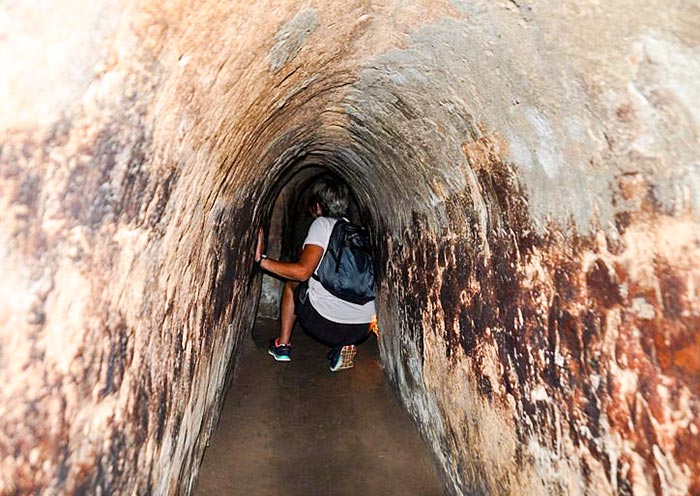
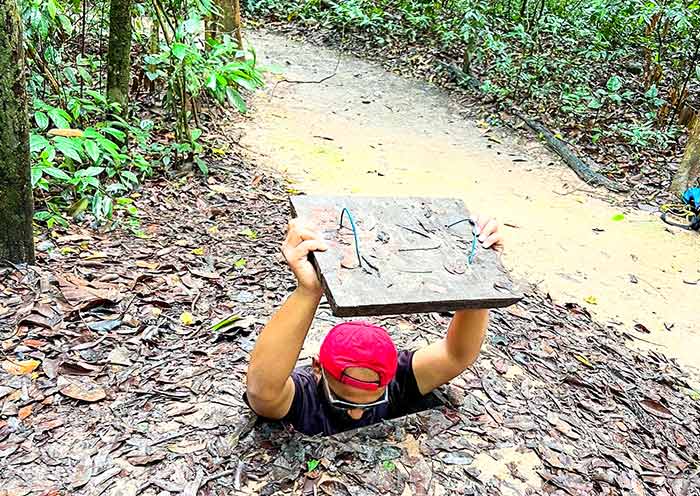

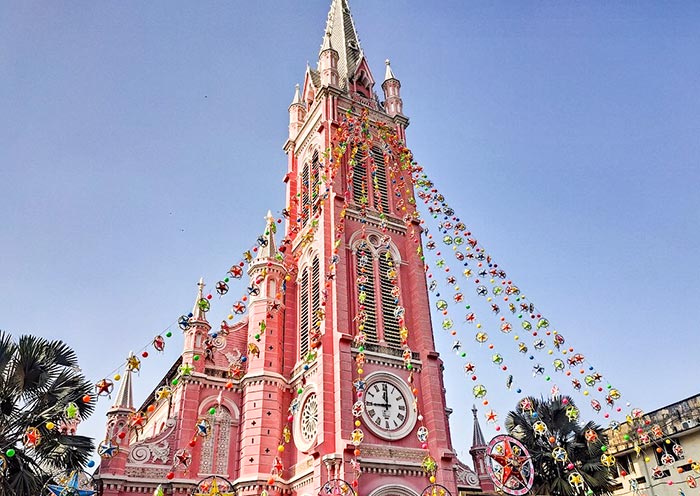
After breakfast, spend a full day exploring the Mekong Delta at a relaxing pace. Mekong Delta, located in southwestern Vietnam, is a vast maze of rivers, canals, islands, and rice paddies formed by the Mekong River as it empties into the sea. Known as the "rice bowl" of Vietnam, the Delta is a major agricultural hub, producing a significant portion of the country's rice and fish.
Start from Ho Chi Minh City, you will pass through green rice fields and small villages to arrive in beautiful rural My Tho. Upon arrival, your first stop is Vinh Trang Pagoda. Built in the mid-19th century, Vinh Trang is renowned for its stunning architecture, showcasing a harmonious fusion of Vietnamese, Chinese, and Khmer influences. You will be amazed by the outstanding architecture, meticulously carved columns with intricate details, and visits to the Statue of Maitreya Buddha, Statue of Amitabha Buddha, Reclining Buddha statue, and 7-story tower.
Later, head to the nearby pier to board a traditional Mekong Delta boat for a scenic cruise along the majestic river. As you explore, lush greenery and bustling river life will captivate you. Glide past the Turtle, Dragon, and Phoenix Islets, eventually arriving at the enchanting Unicorn Islet. And, delve deeper into the Delta's heart with a ride on a traditional sampan boat through narrow waterways lined with coconut palms. This intimate experience allows you to appreciate the unique ecosystem and the local way of life firsthand. Stop at a bee farm to savor honey tea, taste local fruits, and immerse yourself in traditional music performed by the villagers. Learn about their daily lives and gain a deeper understanding of the region's culture. Enjoy a local lunch with Vietnamese dishes.
After lunch, take a boat trip to Ben Tre, known as the coconut kingdom, a charming town famous for its coconut plantations and fruit orchards. Enjoy a leisurely bike ride through the countryside and learn about how coconut products are produced in the region. Visit a coconut candy workshop.
After the memorable tour, get back to Ho Chi Minh City.
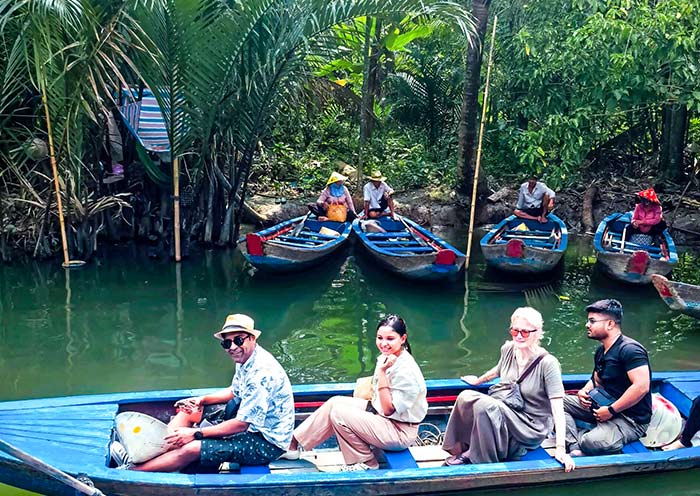
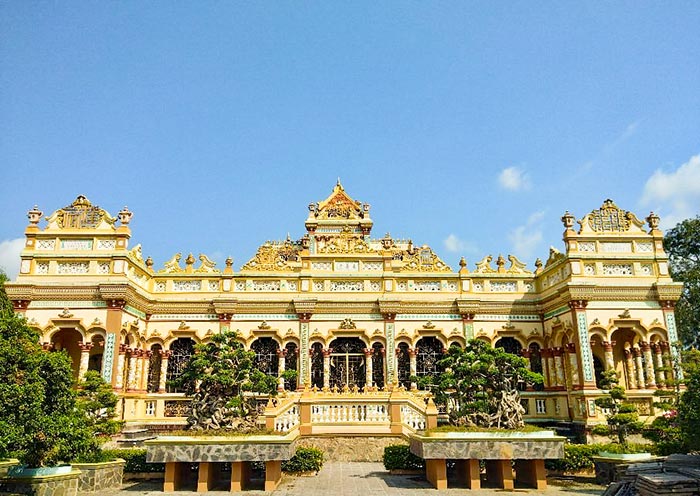
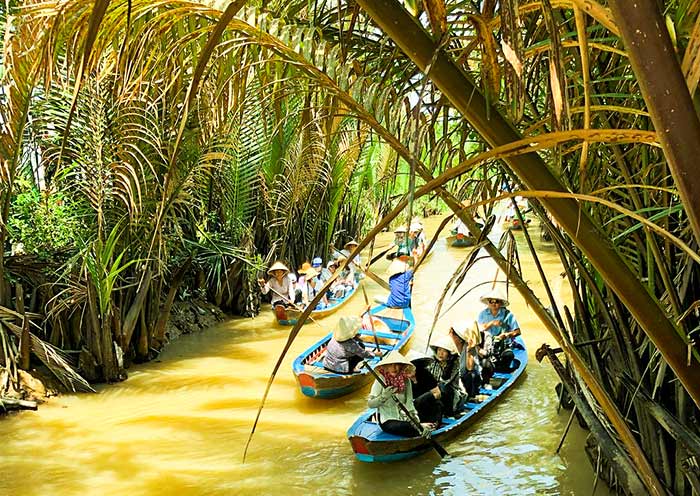
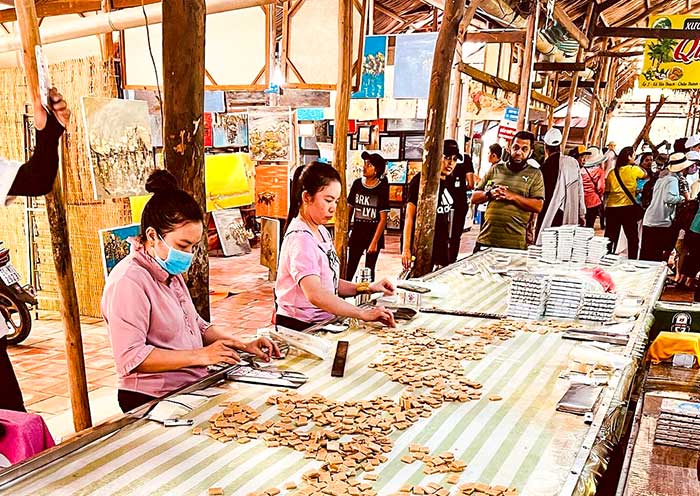
This morning, you'll meet your driver and head to the airport for your flight to Da Nang (about 1h 20m).
Upon arrival in Da Nang, you'll be met by your tour guide and whisked away for a scenic 1-hour drive to Hoi An. Welcome to Hoi An, a UNESCO World Heritage Site famed for its enchanting Hoi An Ancient Town! This charming town boasts a unique blend of architectural styles, reflecting Vietnamese, Chinese, Japanese, and European influences. Your guide will then take you to your hotel in Hoi An for check-in. The rest of the day is yours to explore at your own pace!
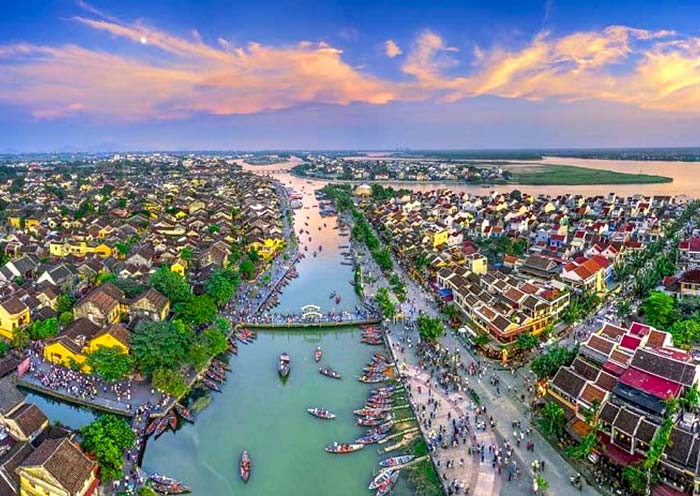
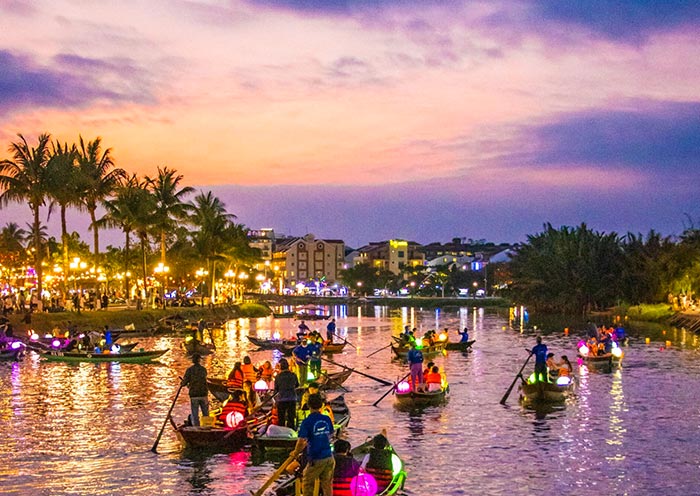
After breakfast, your tour guide will pick you up at your hotel for a half-day excursion to Cam Thanh village, a charming fishing village nestled amidst the Cam Thanh Water Coconut Forest.
The basket boat's history can be traced back over 2,000 years to the Cham people who settled in this area. Originally designed for fishing in shallow waters, these unique Vietnamese watercraft are still used today.
Upon arrival, prepare to take an exciting 45-minute to 1-hour adventure on a traditional basket boat. Crafted from bamboo and woven palm leaves, these boats will take you on a journey through the heart of the verdant coconut palm forest. As you glide through the serene waterways, surrounded by lush coconut groves and vibrant rice paddies, soak in the peaceful atmosphere. Witness the unique ecosystem teeming with diverse flora and fauna. Learn about the local community's commendable efforts in preserving this remarkable environment.
Other activities and experiences include:
- Dance with the locals in the basket boat;
- Try your hand at casting traditional nets and basket traps;
- Catch crabs or snails by the riverbank.
After your exciting excursion to Cam Thanh village, you'll return to Hoi An where you can savor a delicious lunch of authentic Vietnamese cuisine. This afternoon, enjoy a captivating exploration of Hoi An Ancient Town with your knowledgeable guide.
Hoi An Ancient Town, a UNESCO World Heritage Site, is an exceptionally well-preserved example of a Southeast Asian trading port dating from the 15th to the 19th centuries. The complex boasts 1,107 timber-frame buildings. It represents a fusion of indigenous and foreign cultures (principally Chinese and Japanese, with later European influences) that combined to produce this unique, well-preserved town. Walking through Hoi An is like stepping back in time. Our guide will lead you to some of the town's most significant landmarks, including the iconic Japanese Covered Bridge, the ornate Fujian Assembly Hall, and the historic Tan Ky House (Old House of Tan Ky). After, explore the bustling Hoi An market and delve into some of the delicious local offerings, like Cao Lau (Pork Rice Noodles), Com Ga (Chicken Rice), Banh Mi (Vietnamese Baguette), White Rose Dumplings (Banh Bao Vac), and Mi Quang (Turmeric Noodle Soup).
Optional Night Time Ideas in Hoi An Ancient Town:
- As dusk falls, the town comes alive with soft glow of lanterns. Take a leisurely stroll through the narrow alleys and admire the vibrant colors and intricate designs.
- Enjoy a relaxing boat ride on the Thu Bon River as you take in the illuminated riverside and the Japanese Covered Bridge.
- Explore the bustling Hoi An Night Market, where you can find a plethora of local specialties and souvenirs.
After the tour, you’ll be transferred back to the hotel, and then you can have the rest of the day to yourself.
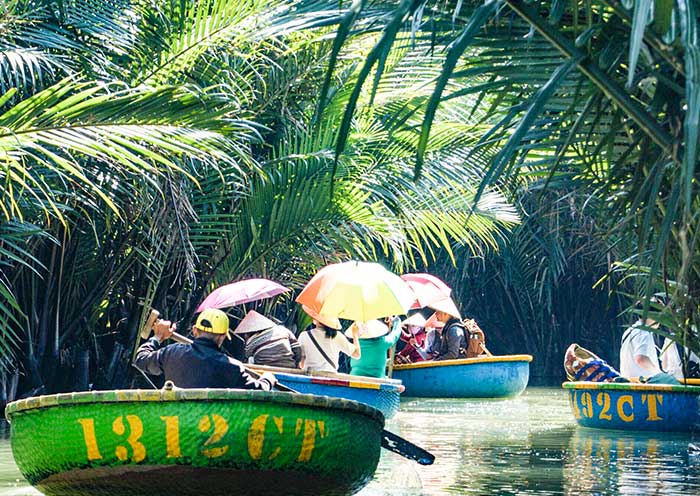
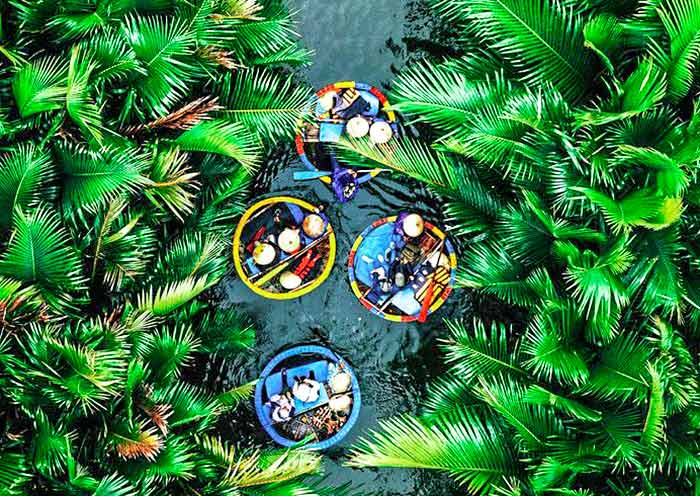
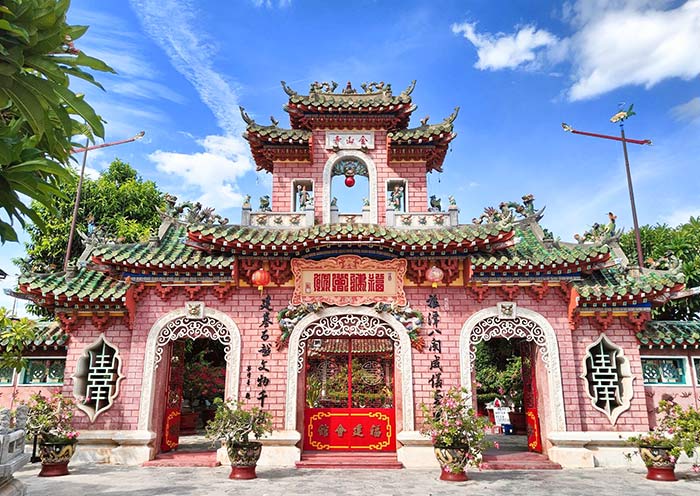
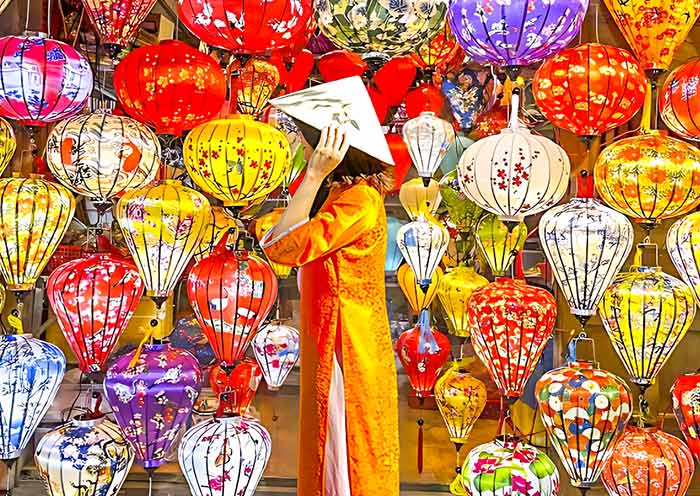
This morning, you will be transferred from Hoi An to Da Nang for a flight to Hanoi (about 1h 20m).
Welcome to Hanoi, the capital city of Vietnam! Upon arrival at Noi Bai International Airport, you will be met by our local guide and driver. Then, we will take you to your carefully selected hotel in Hanoi. The rest of today is free for you to explore this old and charming city at your own pace.
Hanoi, located in northern Vietnam, boasts a rich history dating back over 1,000 years. It showcases a blend of Vietnamese, Chinese, and French influences. Renowned for its diverse culinary scene, Hanoi is considered a food lover's paradise to taste Vietnamese cuisine. The city is famous for its street food, where you can savor an array of local specialties.
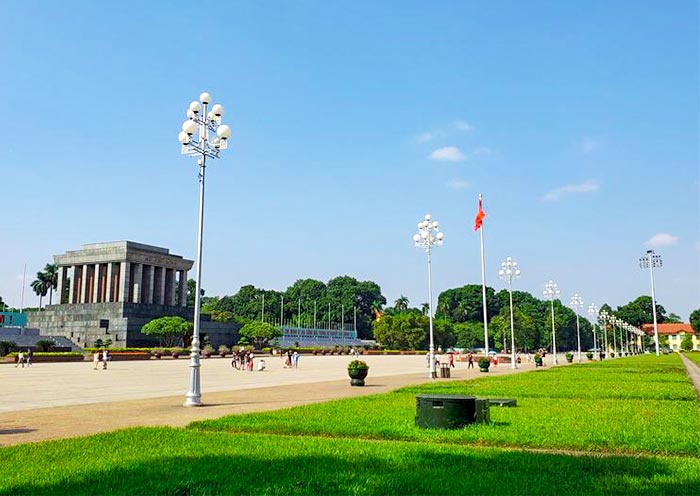
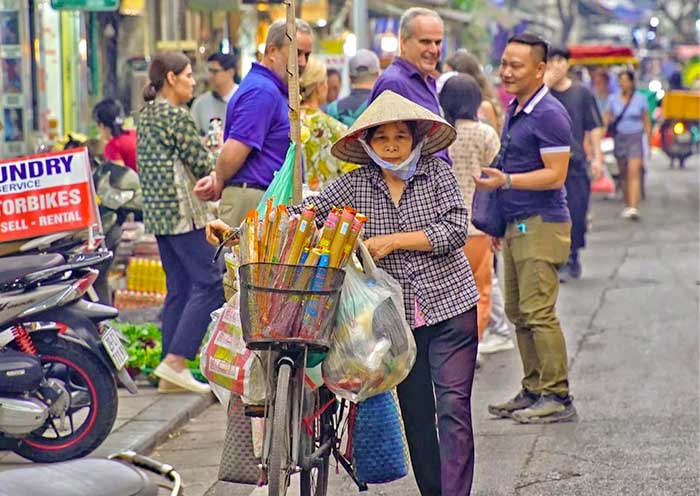
After breakfast, your guide will pick you up at your hotel for a delightful day exploring Hanoi City. This city holds a unique charm despite not being the most modern. Its character lies in the captivating blend of Vietnamese, Chinese, and French influences, all woven together with the city's authentic and bustling local life within its old alleyways. Indulge in the delicious local street food for a taste of true Vietnamese flavors.
Our first stop is a tranquil escape to Tran Quoc Pagoda, nestled amidst the picturesque West Lake. It is the oldest Buddhist temple in Hanoi, with a history dating back over 1500 years. As you approach, you'll be greeted by the sight of the iconic 11-story lotus tower, a symbol of the pagoda. Step inside the main hall and explore its beauty, where intricate carvings and frescoes adorn the walls. Be sure to admire the serene lotus pond, adding to the pagoda's peaceful atmosphere.
Later, head to the Ho Chi Minh Mausoleum, situated in Ba Dinh Square. The mausoleum serves as the final resting place of Ho Chi Minh (Uncle Ho), the revered leader of Vietnamese independence and the founding father of modern Vietnam. Dress respectfully and visit the mausoleum to pay homage to this iconic figure and learn about his immense role in shaping the nation. If you're lucky, you might witness the solemn and precise military honor guard ceremony. (Note: 1. The Mausoleum closes from Sep. 4 to Nov. 4 every year. 2. The surrounding sites include the Presidential Palace, Ho Chi Minh's Stilt House, and the Ho Chi Minh Museum.)
Afterward, enjoy a short walk to visit the One Pillar Pagoda. Prepare to be amazed by its distinctive shape: the main building sits atop a single stone pillar, resembling a lotus flower blossoming from a pond. Legend has it that Emperor Ly Thai Tong dreamt of receiving a son from the Buddhist goddess of mercy, Quan Am Bo Tat, on a lotus flower. The pagoda's construction served as a way to express his gratitude. Later, visit the Temple of Literature, Vietnam's first university and a site dedicated to Confucianism.
This afternoon, delve into Vietnam's fascinating history at the Vietnam National Museum of History. Here, you'll gain a comprehensive understanding of Vietnam's past, from prehistoric times to the 20th century, through a captivating display of artifacts. Witness ancient bronze drums, intricate ceramics, and powerful imperial regalia, each piece whispering stories of Vietnam's remarkable evolution.
Later, head to Hoan Kiem Lake, also known as Lake of the Restored Sword, a shimmering jewel in the heart of Hanoi. Take a leisurely stroll along the lake's perimeter, enjoying a view of the iconic Turtle Tower. Legend tells the tale of Emperor Le Loi returning a magical sword to a giant turtle residing in the lake, thus giving rise to the name "Lake of the Returned Sword." Afterwards, visit Ngoc Son Temple, dedicated to various Vietnamese historical figures and the revered Confucian scholar Van Xuong.
Afterward, immerse yourself in the local life of Vietnam with a unique and fun cyclo tour! For about an hour, you'll travel at a slow and leisurely pace through the iconic Old Quarter of Hanoi. A cyclo, a traditional three-wheeled bicycle taxi, will be your chariot for exploring the narrow streets. Cruise through the famed 36 Streets (each named after a specific trade) and pass by iconic landmarks like Dong Xuan Market, St. Joseph's Cathedral, and the Hanoi Opera House. This is a fantastic way to experience the Old Quarter's charming and vibrant atmosphere firsthand! Don't miss the chance to savor the delicious variety of Vietnamese street food and local dishes!
Optional Water Puppet Show: Immerse yourself in a unique Vietnamese tradition by catching a water puppet show in the late afternoon or evening! Dating back to the 11th century, these captivating performances use colorful puppets manipulated on a water stage to depict folktales and historical events. A highly-recommended venue for this experience is the Thang Long Water Puppet Theatre.
After the tour, be escorted to your hotel in Hanoi.
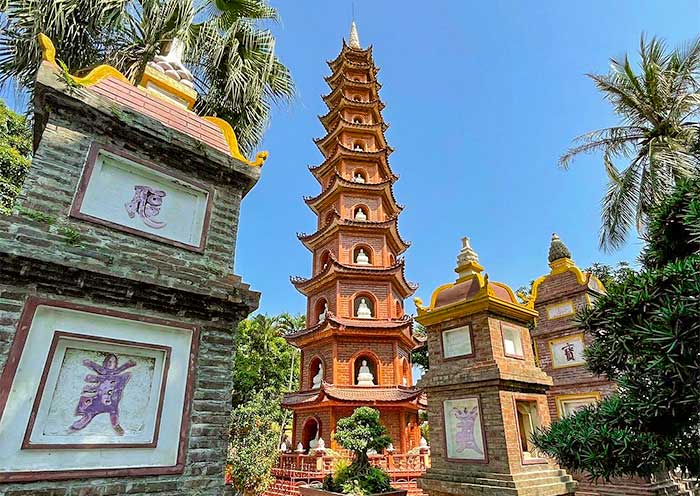
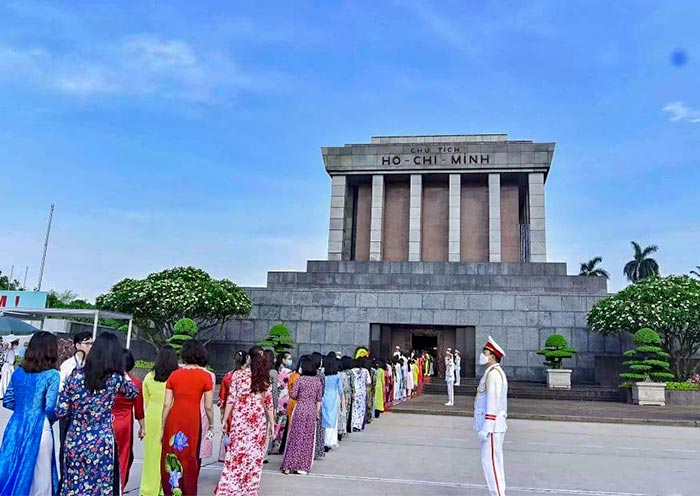

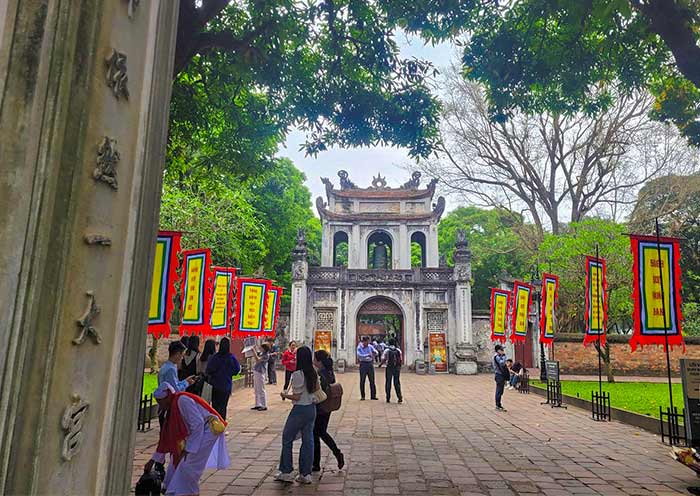
Halong Bay, A UNESCO World Heritage Site, boasts thousands of majestic limestone formations, sculpted by nature over millions of years. Reputed as “Guilin on the Sea”, these emerald islands rise dramatically from crystal-clear turquoise waters, creating a breathtaking seascape. Thanks to its dramatic cliffs, shimmering turquoise waters, and over 1,600 limestone islands and islets, Halong Bay is one of the most popular destinations in northern Vietnam. A cruise offers the best way to experience its unparalleled beauty.
Morning:
This morning, between 8:00 AM and 8:30 AM, the cruise company's shuttle bus will pick you up in Hanoi's Old Quarter area. Hop aboard and prepare to be whisked away on a scenic 2.5-hour drive (147 km) to stunning Halong Bay!
Upon arrival, you'll be warmly welcomed aboard with a refreshing drink. Following a quick safety briefing from the cruise manager, you can relax and savor a delicious lunch onboard.
Afternoon:
This afternoon, you’ll explore Halong Bay's dramatic karst landscape with your cruise! Different cruise companies offer various itineraries, but you might visit some of these fascinating spots and try water activities like kayaking, swimming, etc. Watch the sunset paint the karst mountains with colors.
- Sung Sot Cave (Surprise Cave): Discover a magnificent cave adorned with stalactites and stalagmites.
- Titop Island: Hike to the peak for breathtaking panoramic views of the bay.
- Cua Van Fishing Village: Witness the traditional way of life of local fishermen in a floating village.
- Tung Sau Pearl Farm: Learn about pearl cultivation and see these beautiful gems firsthand.
- Trinh Nu Cave (Virgin Cave): Discover a secluded cave with a unique rock formation.
Evening
This evening, indulge in a hearty dinner prepared by our talented chefs in the elegant dining room. After dinner, unwind with a variety of leisure options: join in on board games, try your hand at squid fishing, catch a night movie, or head to the bars & karaoke. Overnight onboard.
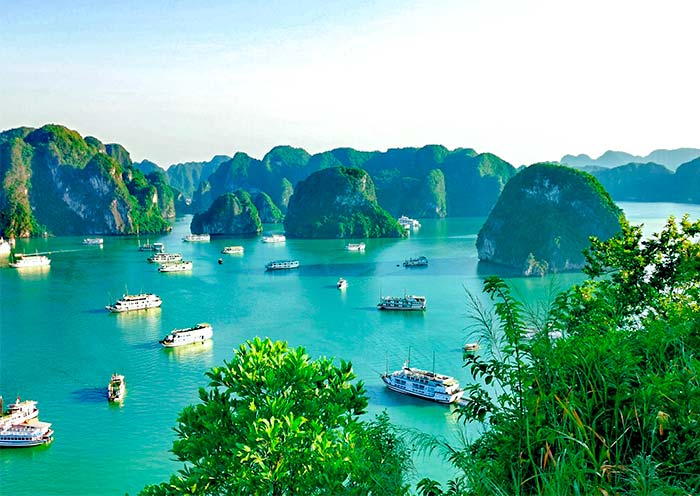
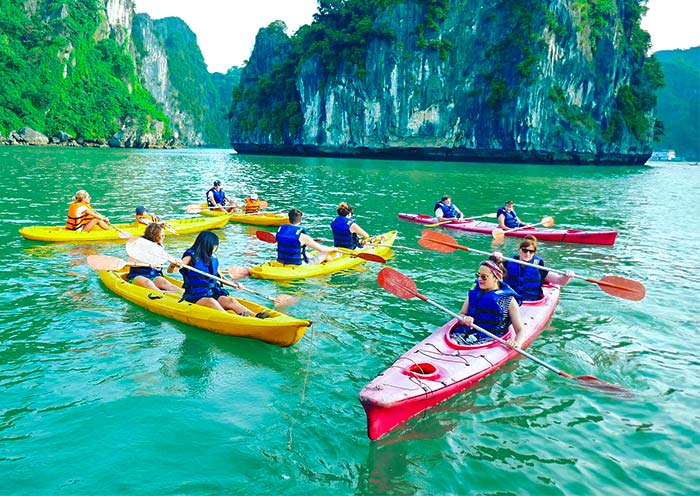
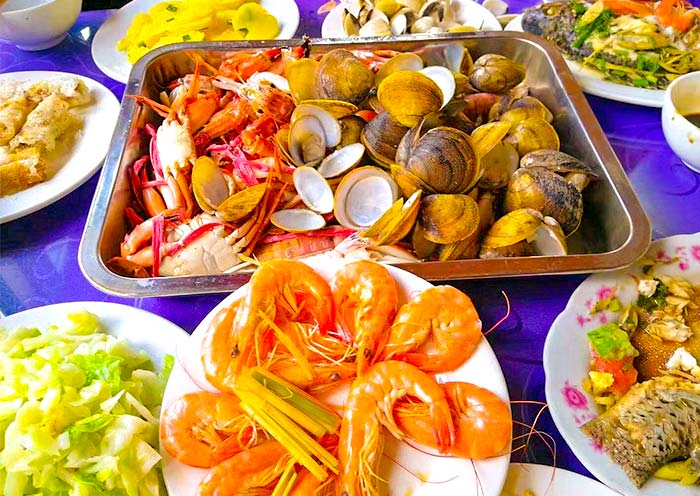
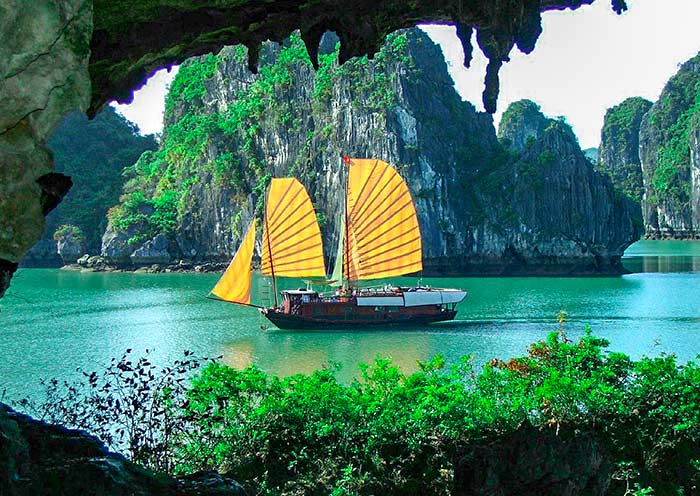
Early risers can embrace the sunrise with a Tai Chi class on the sundeck, invigorating your body and mind. Enjoy a delicious breakfast to onboard.
After breakfast, continue your exploration of Halong Bay! You can choose to participate in exciting water activities like kayaking or follow the cruise itinerary to admire the majestic limestone formations.
Later this morning, return to the cruise for a smooth check-out process at the reception. As you cruise back to the pier, savor a delightful lunch at 10:00 AM. Disembarkation will take place between 11:00 AM and 11:30 AM.
Following disembarkation, you'll be transferred back to Hanoi. Meet your driver and head to the airport for your flight to Shanghai (about 3h).
Welcome to Shanghai, China’s most internationalized and vibrant city! Upon your arrival in Shanghai, your driver will meet you at the exit of the airport and escort you to your hotel in downtown Shanghai. You will have free time after your hotel check-in.
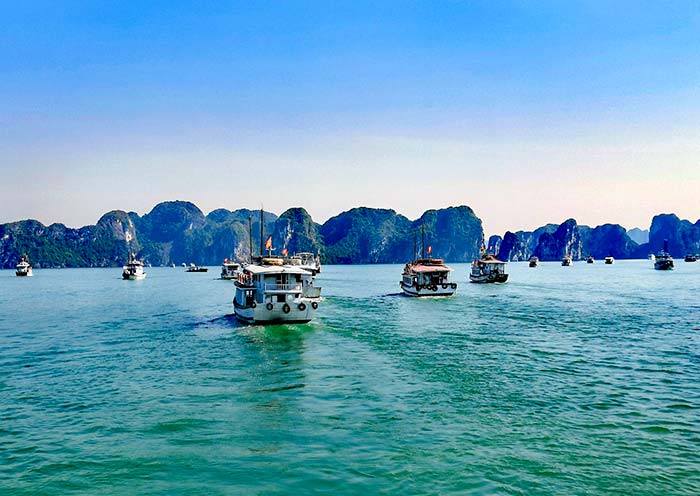

Today, your group will have full day to experience the perfect blend of East and West in the "Paris of the East." Explore brilliant museums, classical gardens, futuristic skyscrapers, and stunning architecture - all in one vibrant city.
First, head to Pudong and the Lujiazui financial district, home to a trio of iconic skyscrapers. The Shanghai Tower, China’s tallest and the world’s second-tallest building at 632 meters (2,073 ft), soars with a dramatic 120-degree twist from base to peak. Ride the world’s fastest elevators (64 km/h) to the "Top of Shanghai Observatory" on the 118th floor, 546 meters above ground. Enjoy breathtaking 360-degree views of the city, with the Jin Mao Tower and Shanghai World Financial Center below.
Later, visit the Shanghai Museum (East), one of the world’s finest museums of ancient Chinese art. Its sleek, modern design is inspired by the traditional Chinese jade bi disc. Inside, explore galleries of bronzes, ceramics, calligraphy, paintings, jade, furniture, coins, and sculptures. Don’t miss iconic treasures like the Da Ke Ding, a 3,000-year-old bronze vessel, displayed with the Zi Long Ding and Marquis of Jin Bells - a rare highlight of the Bronze Gallery. Also, see the legendary Sword of King Goujian of Yue, a masterpiece of ancient craftsmanship.
Next, visit Yu Garden, Shanghai’s most famous classical garden, hidden in the heart of the city. Stroll through elegant pavilions, rockeries, and lotus ponds, and admire exquisite carvings and traditional architecture. Outside, Yuyuan Bazaar offers local snacks, souvenirs, and handcrafted art.
In the afternoon, walk along Nanjing Road Pedestrian Street, lined with global brands, cafes, and historic buildings. End at the Bund, Shanghai’s top must-see landmark. Known as the "Exhibition of International Architecture," it features 52 grand buildings in Gothic, Baroque, and Art Deco styles. From here, enjoy a stunning view of the Pudong skyline across the Huangpu River.
Travel Notes:
- Yu Garden is closed on Mondays. In this case, we may visit the City God Temple, or French Concession
- Shanghai Museum (East) is closed on Tuesdays. You will visit Shanghai Museum (People’s Square) on that day. If access to the People’s Square location is unavailable, we will arrange an alternative city attraction.
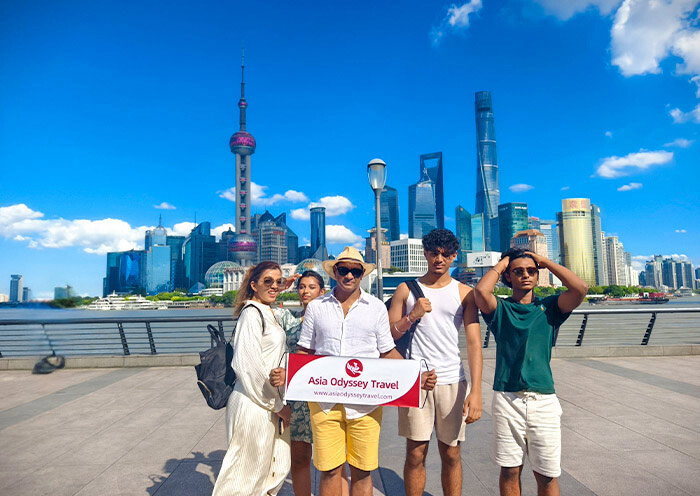
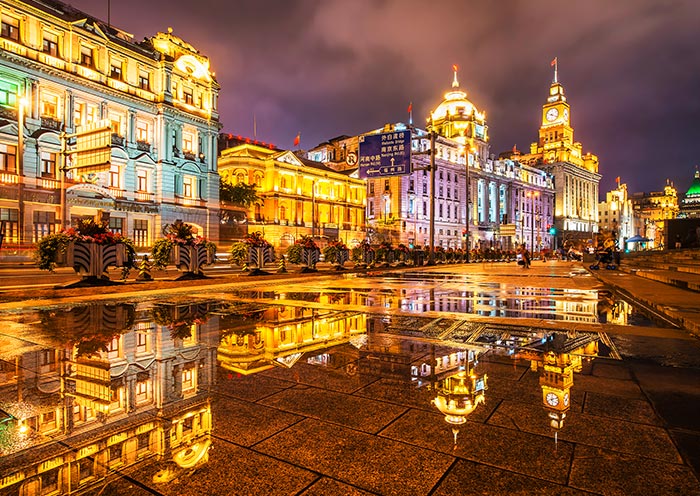
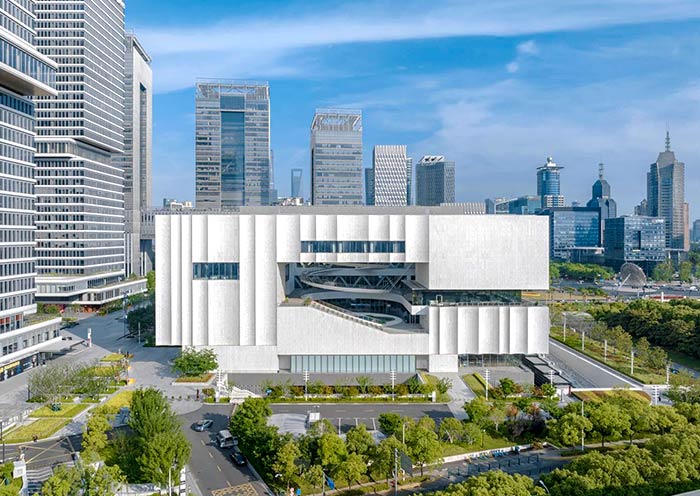
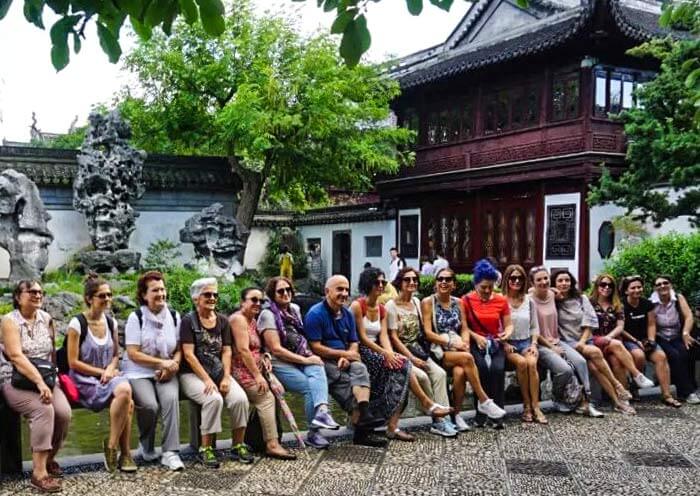
On this day, you will have some free time till be met in the hotel lobby and escorted to the airport for your flight to Zhangjiajie (about 2.5 hours).
Welcome to Zhangjiajie, an incredible place where you can see Avatar Hallelujah Mountain in reality! Upon your arrival in Zhangjiajie, the local driver will greet you at the exit of the airport, and then escort you to your hotel in Wulingyuan Area. Enjoy some free time on your own after the hotel check-in.
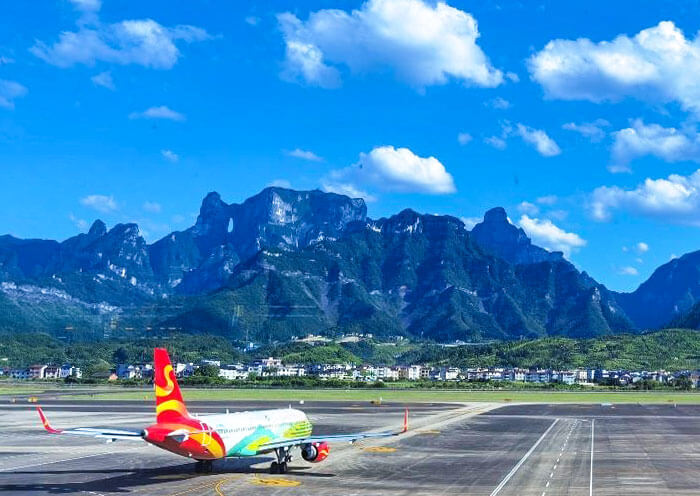
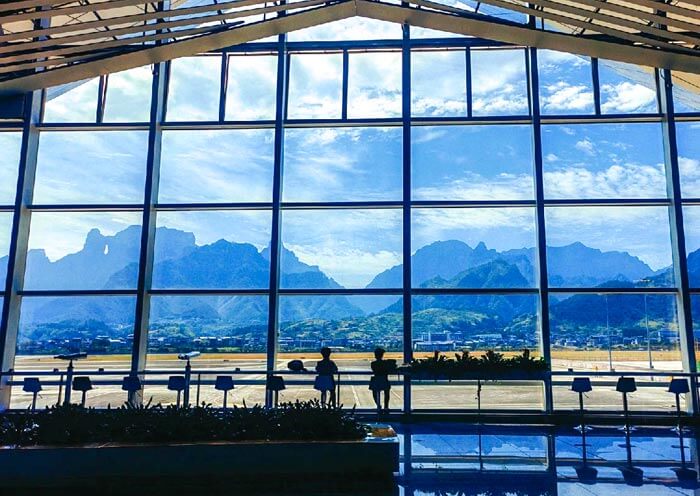
After breakfast, you will have a whole day to explore Wulingyuan Scenic Area, a spectacular island of nature dominated by more than 3,000 narrow quartz sandstone pillars. First, take a sightseeing bus to Bailong Elevator that within 1.5 minutes you can go from the valley bottom up to the pillar peak. It is the fastest and as well as the tallest outdoor elevator in the world. Next, enjoy the hike into a mysterious Pandora World - Yuanjiajie, where is rightly the shooting location of “Hallelujah Mountains” in reality. Catch the chance to shoot South Sky Pillar, the landmark of Yuanjiajie, about 150 meters high vertically rising high from the deep valley, looking like a giant standing so upright under heaven. Go to the Enchanting Platform for a marvel at the unbelievable scenery with hundreds of various peaks like bamboo shoots towering from the grounds. And then enjoy the lush scenery of Natural Bonsai at Backyard Garden.
Next, take the sightseeing bus to the second tourist site - Tianzi Mountain Nature Reserve which was named after the leader of the local Tujia ethnic group - Xiang Dakun in early Ming Dynasty (1368-1644). It is a fairyland in moive Monkey King. Hike to He Long Park which has a fascinating viewing deck to appreciate the incredible and magnificent scene of peculiar stone peaks. Move to Dianjiang Terrace to overlook the West Sea Stone Forest, rugged rock rising out of a misty canyon. The last stop today is the Ten-mile Galley. You will take a small green train to explore the beautiful scenery where you will feel like get through a Chinese ink painting. After the tour, get back to your hotel for a good rest.
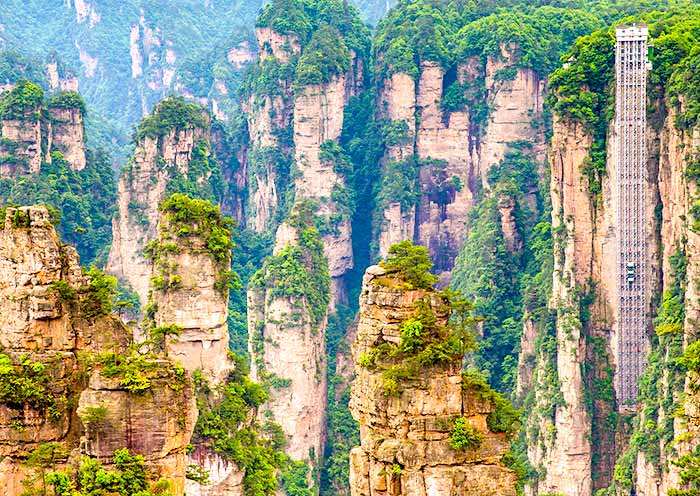
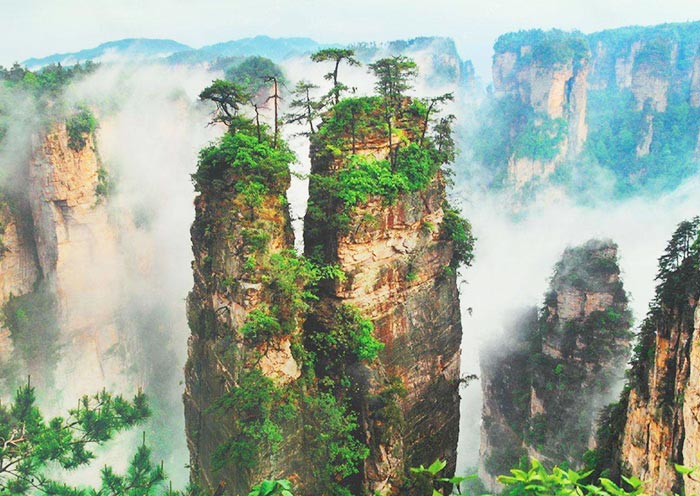
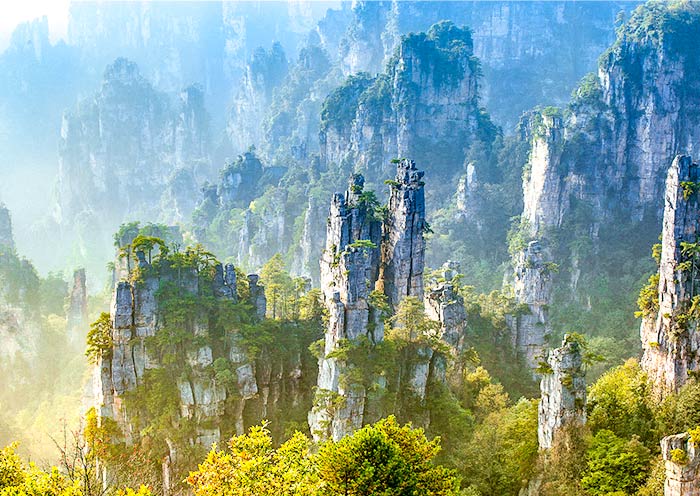
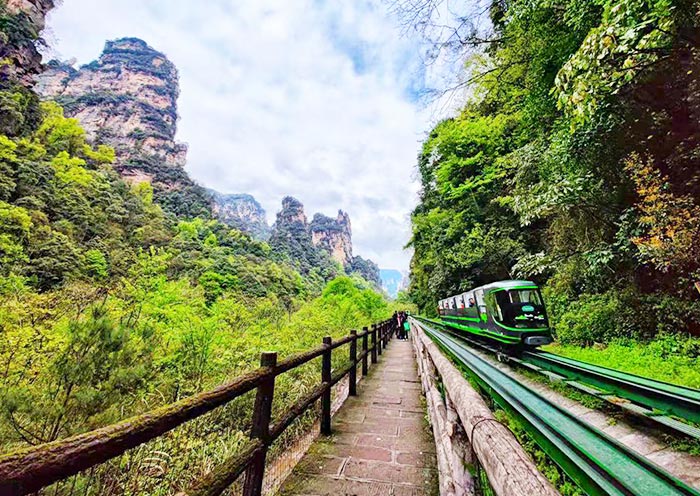
After breakfast, you will be transferred to the Zhangjiajie Grand Canyon for the breathtaking Grand Canyon Glass Bridge experience. The Grand Canyon Glass Bridge wants to say “hello” to you and makes you yell “my god” to give a deeper impression of Zhangjiajie. Suspended between two peaks, the glass bridge is 430 meters long and 300 meters high, which is the longest and highest glass bridge in the world. Standing on the transparent glass is like floating in the air and you can have superb panoramic view of the entire Grand Canyon.
After your “tremble” on the glass bridge, move to the Baofeng Lake to do a scenic cruise to bring you back to peace. Surrounded by green trees and stone peaks of various shapes, Baofeng Lake is an idyllic place for relaxation. When leisurely cruising on the boat, you can see the reflection of the marvelous peaks and enjoy the folk songs performed by the local minority people.
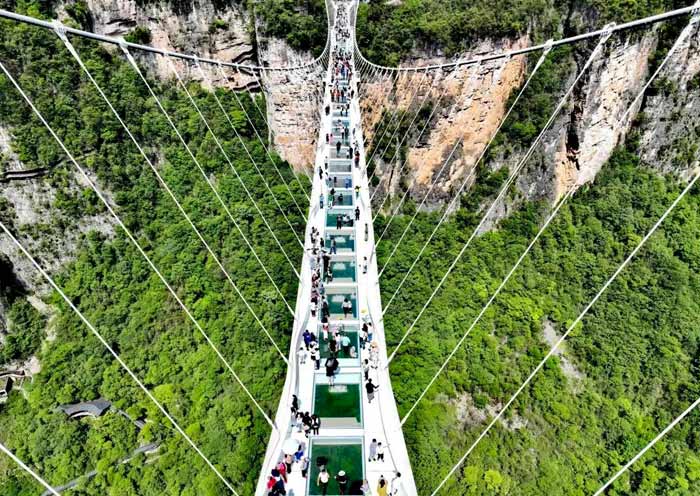
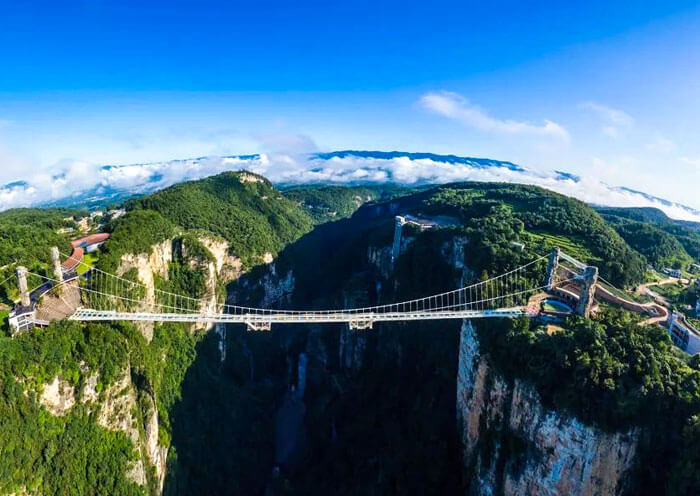
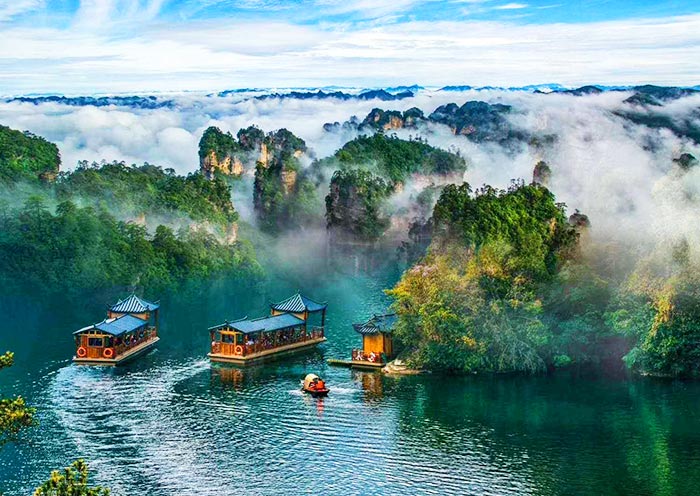
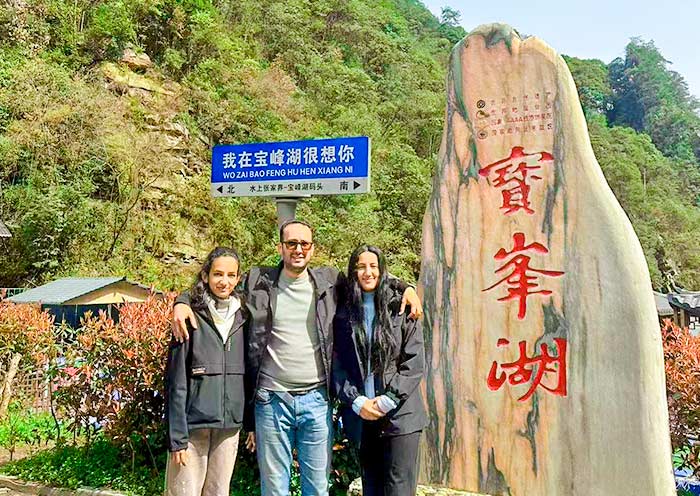
After breakfast, your guide and driver will pick you up at your hotel lobby. Today, you will make a breathtaking visit to Tianmen Mountain, one of the world’s most beautiful mountains. You won’t miss the chance to experience the world’s longest cable car, walk on the glass skywalk, and pay a visit Heaven’s Door and view Avenue toward Heaven with 99 turns.
First, go to take the 30-minute cable car with 7,455 meters in length which means you’ll travel from the city of Zhangjiajie to the top of Tianmen Mountain. From the cable car you will have a perfect view of Heaven’s Door and a shocking look at the wandering Avenue toward Heaven. Next, move to Tianmen Temple where you can enjoy the typical Qing Dynasty styled Buddhist structure with verdant forest surrounding by.
Now, the challenge time is coming. Hold your breath to experience the scary walks on the cliff path hanging on the mountain. Walk on the Glass Skywalk, which is transparent glass 1430 meters above the bottomless valley, giving you a thrilling feeling like walking in the sky. Also, try the 1.6-kilometer-long Cliff-Hanging Walkway, built along the edges of the mountain’s summits. Amazing, isn’t it? After that, go down by escalator from the peak to Tianmen Cave which is also known as “Heaven’s Door”. Tianmen Cave is a natural arch between two peaks of a height of 131.5 meters, rising above the ground and closing to the sky with a lofty and towering posture. It is the highest hole of its sort in the world. (Note: Tianmen Mountain is the famous spot for Wingsuit Flying, you might have a chance to witness this unbelievable sport there.) After the memorable time, take the cable car down the mountain. And then, you will be transferred to Wulingyuan area and have accommodation here.
After the tour, it is time to say goodbye to Zhangjiajie. You will be escorted to the airport for your night flight to Xian (about 2 hours). Upon your arrival in Xian, the local driver will meet you at the exit of the airport and escort you to your hotel.
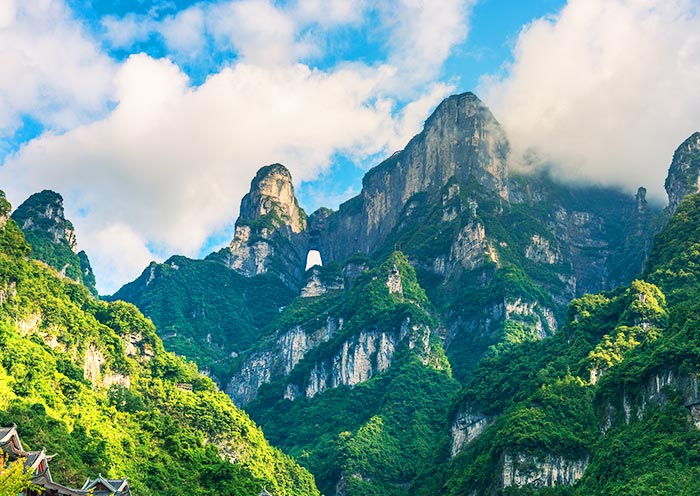
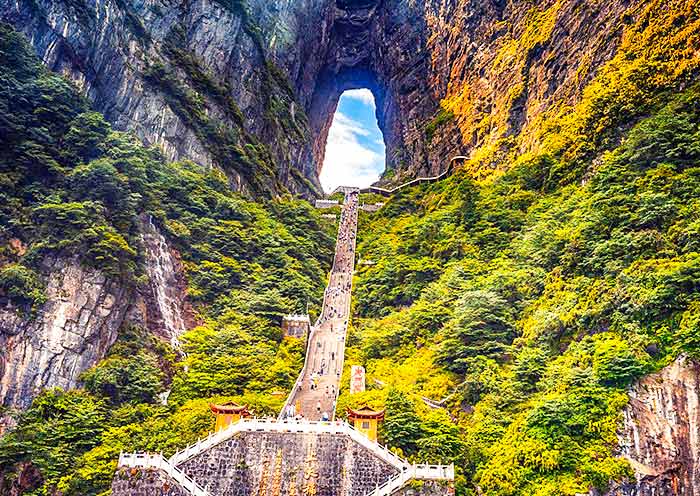
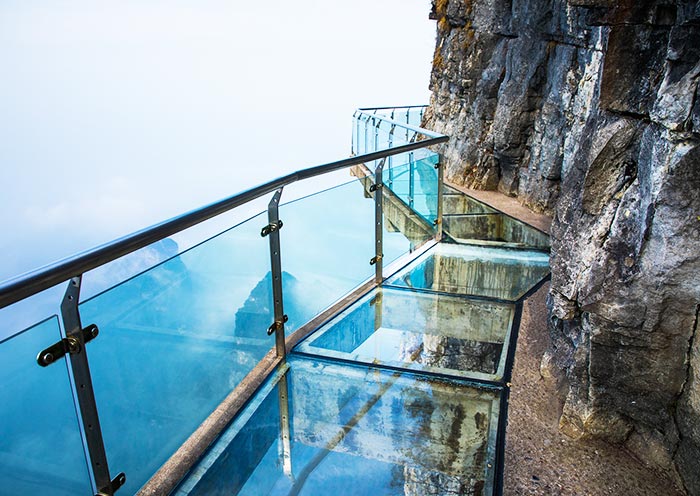
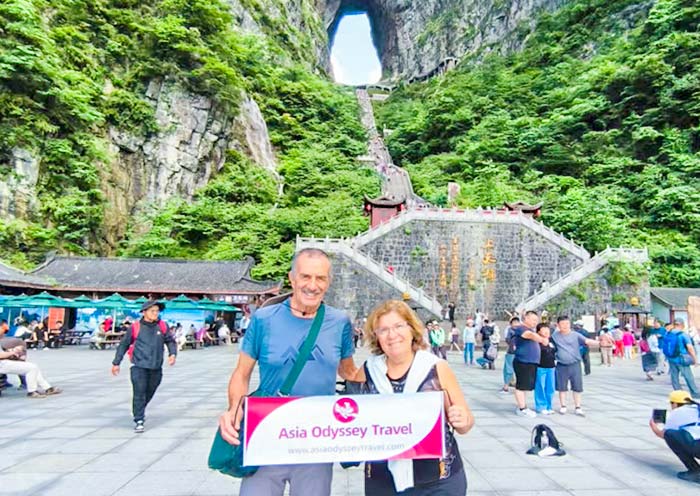
After breakfast, embark on a scenic journey from Wulingyuan to the Zhangjiajie Grand Canyon (approximately 56 km, 1.5 hours by car). Here, you'll experience the world-famous Grand Canyon Glass Bridge, the longest and highest glass-bottomed bridge in the world. Spanning 375 meters and standing 300 meters above the canyon floor, this architectural marvel offers breathtaking views and the thrill of walking on transparent glass. For the adventurous, there's also the option of the world’s highest bungee jump (self-pay).
Later, you’ll explore the breathtaking Grand Canyon, descending through towering cliffs and lush vegetation. Along the way, discover serene waterfalls, streams, and natural pools, perfect for moments of tranquility. Highlights include the stunning Butterfly Waterfall and Rainbow Waterfall, especially vibrant during the rainy season. At the canyon’s base, enjoy an optional boat ride on calm waters, offering a unique view of the majestic cliffs. With gentle paths, the entire valley tour is a leisurely and scenic walk, taking just 1.5 to 2 hours.
Afterward, you’ll be transferred to Zhangjiajie City for an overnight stay.
In downtown Zhangjiajie, you can explore the 72 Strange Buildings, recognized as the Guinness World Record holder for the highest stilted building. Witness the unique stilted houses that showcase the distinctive features of the Tujia ethnic culture. Immerse yourself in Tujia traditions and enjoy a variety of traditional folk performances (held between 18:00 and 22:35), including drum beating, the Tujia waving dance, street martial arts, and the bridal parade.
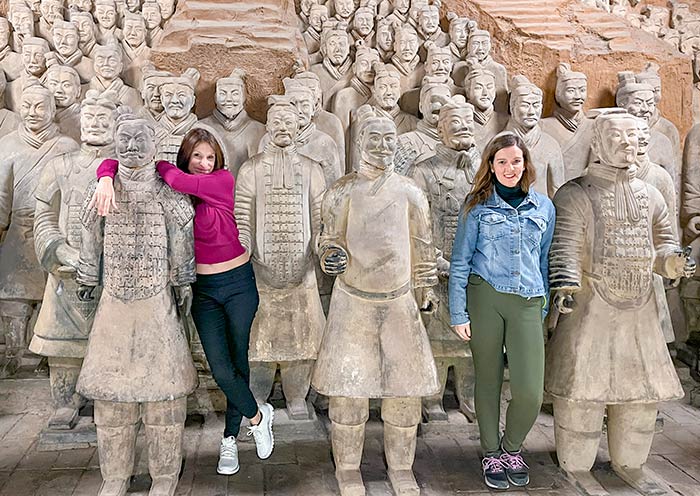

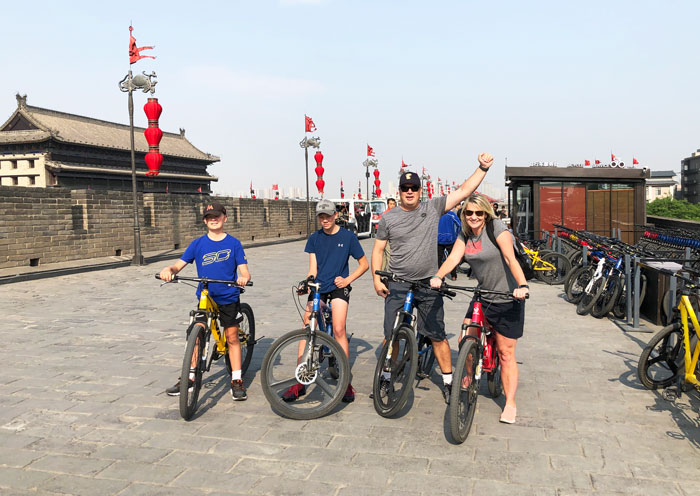
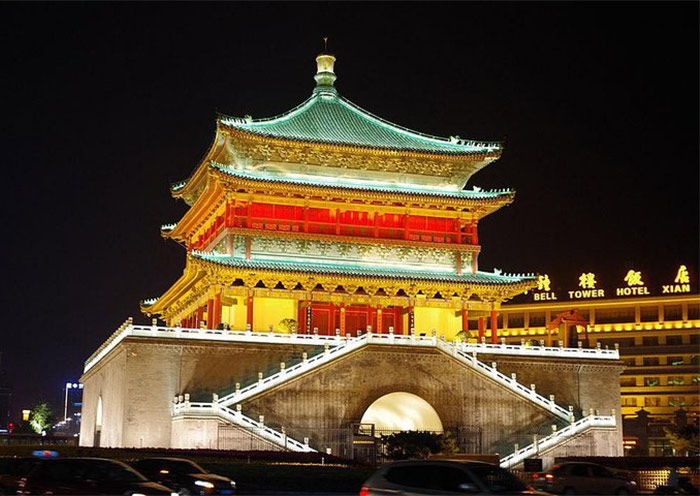
This morning, you will go to visit the Giant Wild Goose Pagoda, one of Xi'an's most recognizable landmarks and symbol of the magnificence of the Tang Dynasty. This seven-story pagoda standing in the tranquil Da Ci'en Temple is one of China's best examples of a Tang-style pagoda (squarish rather than round). It was completed in AD 652 to house Buddhist sutras brought back from India by the monk Xuan Zang. His travels inspired one of the best-known works of Chinese literature, Journey to the West. Later, you will have the opportunity to explore the vibrant and bustling Muslim Quarter (Muslim Street). This historic quarter, situated just behind the Drum Tower about 430 meters west of the Bell Tower in downtown Xian, has been around for over 1,000 years.
After the tour, you will be transferred to the train station for your high speed train to next destination - Beijing. Upon arrival in Beijing, your driver will meet you at the train station and escort you to your hotel. The rest of the day is free on your own so you can explore by yourself around your hotel.
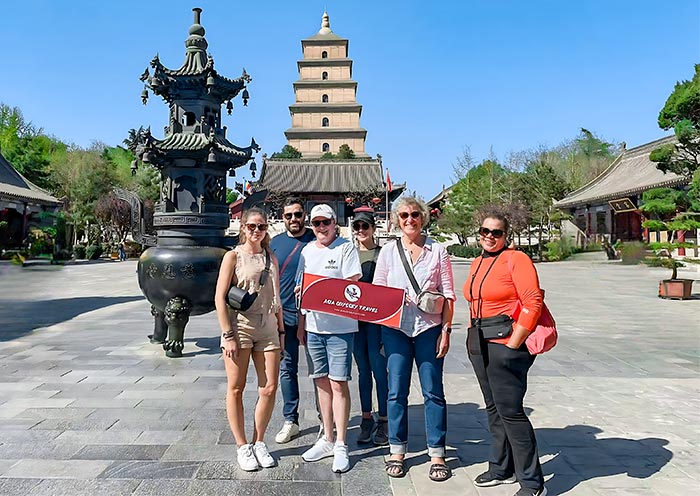
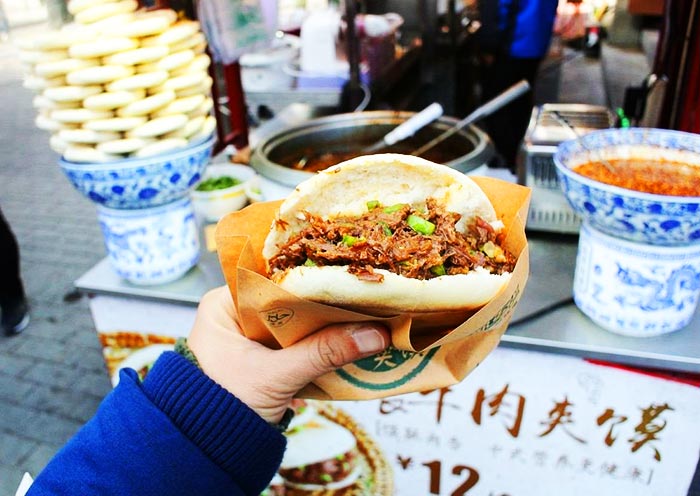
Today you will spend the whole day exploring the ancient citadel of Beijing through China's famous landmarks, imperial grandeur, and royal gardens.
After breakfast, your guide will pick you up at your hotel and head to Tiananmen Square, the world's largest public square and symbol of China. It has witnessed many major events in China's history over the past decades, and from here you can take great photos of Tiananmen Gate, seen daily on CCTV News.
Walking across the square, you will visit the mighty and splendid Forbidden City, the world's largest palace complex and former home of 24 Chinese emperors. Listed as a UNESCO World Heritage site, the Forbidden City has about 500 years of history, serving as the political and ritual center of China during the Ming (1368-1644) and Qing (1644-1911) dynasties. With over 8,700 rooms, it is not only China's largest and best-preserved collection of ancient buildings, but also a city within a city, like the Vatican in Rome. Enter through the Meridian Gate and visit along the central axis to ensure you see all the highlights. Admire the brilliant architecture and numerous ancient treasures while listening to your guide share stories of the emperors who once lived here.
Later, take a 15-minute walk up to Jingshan Park, where you can enjoy magnificent panoramic views over modern Beijing and the Forbidden City's russet roofs.
In the afternoon, drive to the Summer Palace, the "Museum of Royal Gardens," once a summer retreat for royal families. The grounds, temples, gardens, pavilions, lakes, bridges, gate-towers, and corridors are marvels of landscape design. Take a leisurely stroll to appreciate the imperial architecture, hilltop views, and beautiful lakes, which offer a pastoral escape into the landscapes of traditional Chinese painting.
(Travel Note: Travel Note: The Forbidden City in Beijing is closed on Mondays. If your tour falls on that day, the itinerary will be adjusted to ensure you visit the Forbidden City.
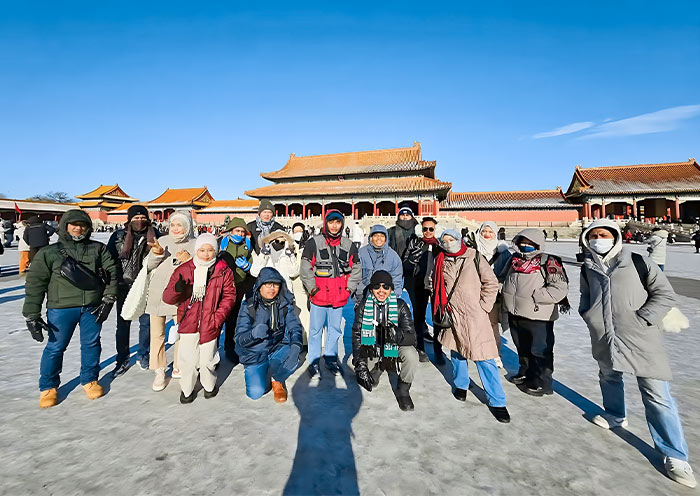
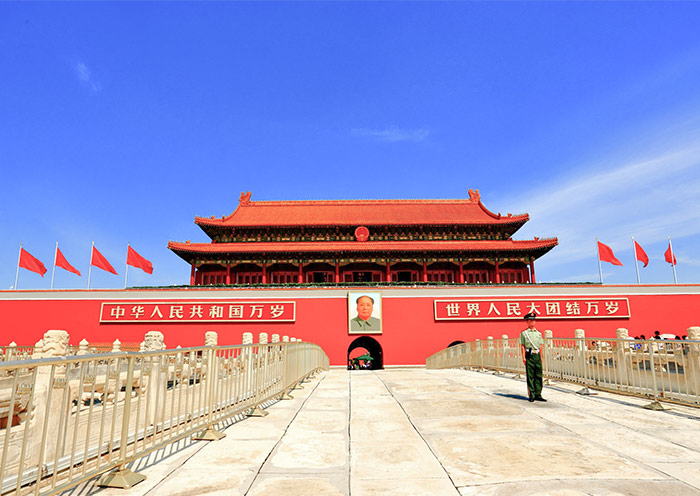
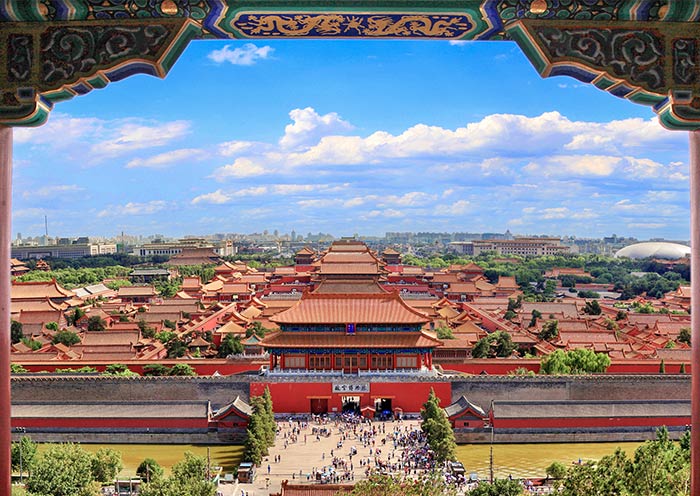
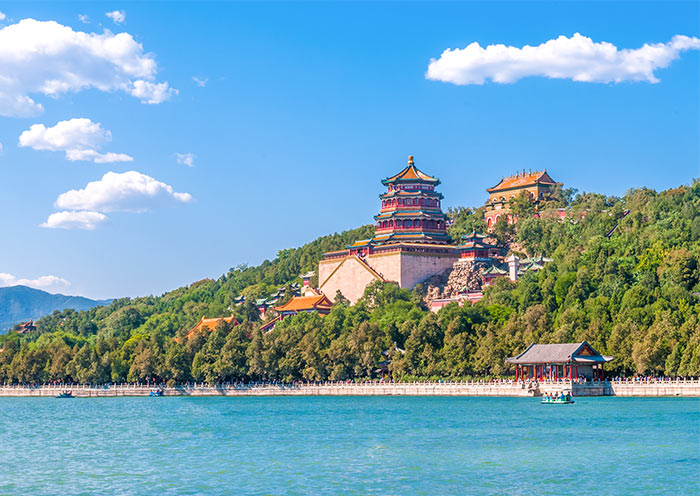
In this morning, you will head northwest of Beijing (about 1.5-2 hours’ drive, 73km) to the Great Wall at Mutianyu. The Great Wall boasts a history over 2,000 years and stretches more than 3,000 miles across several provinces of northern China, making it one of the most impressive ancient masterpieces on the planet. Mutianyu Great Wall is connected with the Jiankou Great Wall in the west and the Gubeikou Great Wall in the east. Mutianyu is the longest and best fully-restored Great Wall with fewer tourists and is also famed for its 23 Ming-era watchtowers and stunning views. Take the cable car up to the 14th watchtower and then enjoy the memorable hiking time on the wall while visiting its western route. With the green pines and cypresses covering the surrounding area, and the winding wall standing majestically on the vast land, you will capture the most stunning natural scenery in this section. Challenge yourselves while climbing up to the 20th watchtower where you could fulfill your Great Wall dream. Cherish the chance and take photos as many as you like!
After the once-in-lifetime experience, head back to downtown Beijing and have the chance to take photos with the exterior of the Bird's Nest (Beijing National Stadium) and Water Cube (Beijing National Aquatics Center). They were both designed for the 2008 Beijing Olympics and used for the 2022 Winter Olympic Games.
After that, transfer back to your hotel and have a good rest tonight.
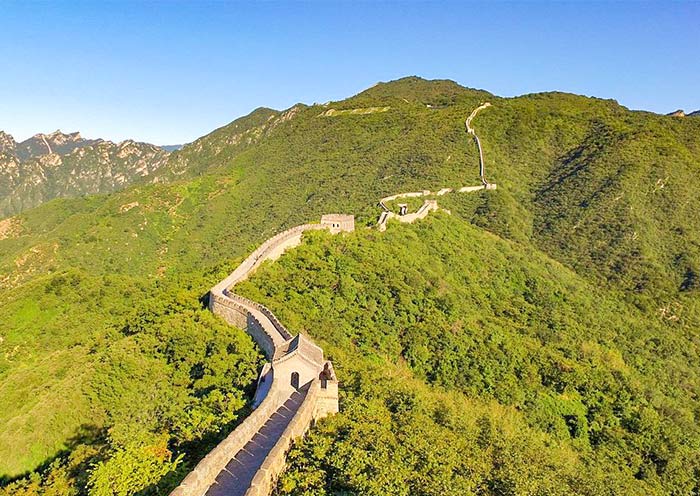
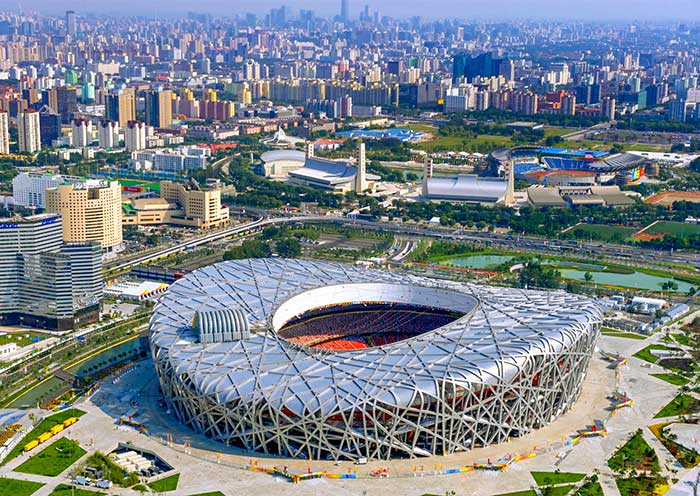
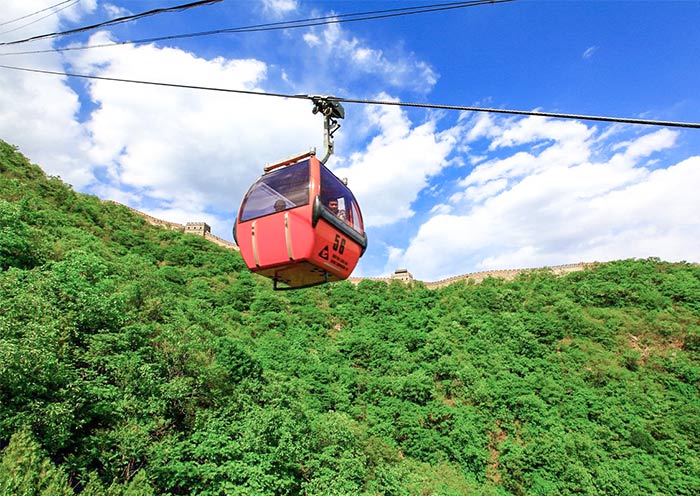
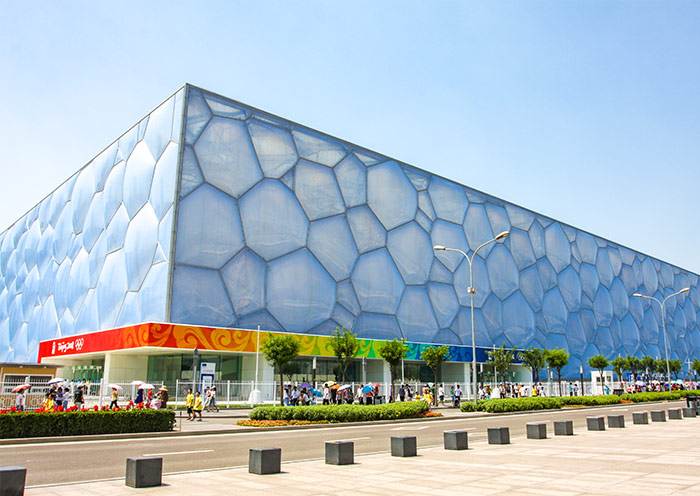
After breakfast, your driver will escort you to the airport for your flight to Osaka, Japan (about 3h). Welcome to Japan! Upon your arrival at Osaka's Kansai International Airport, our representative will greet you with a sign bearing your name right at the arrivals gate. Then he will transfer you to your carefully selected hotel in Osaka. Check into your hotel and take some time to settle in and refresh. The rest of today is free for you to explore the local surroundings at your own pace.
Osaka, as Japan's third-largest city and a major economic hub, is renowned for its rich history, diverse cuisine, unique culture, and strong economic power. The city exudes a distinct sense of humor and an open, warm personality, making it exceptionally vibrant and colorful compared to other cities. Across its vast concrete expanse, dazzling neon lights and brightly colored storefronts illuminate the lively nightlife and irresistible culinary scenes. Known as the "nation's kitchen," Osaka is the birthplace of many Japanese culinary delights.
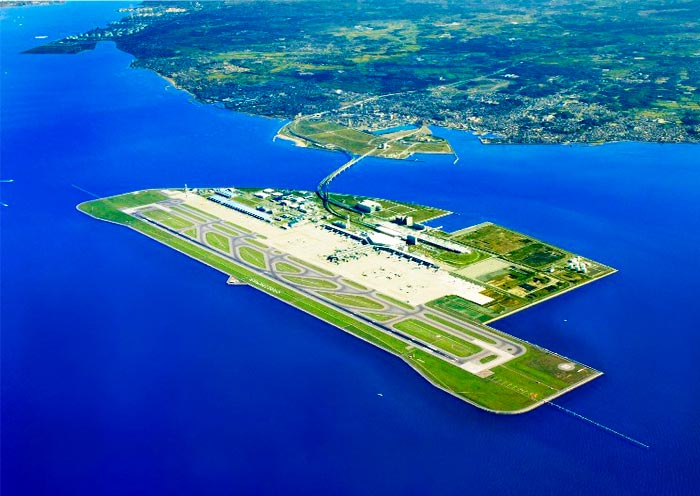
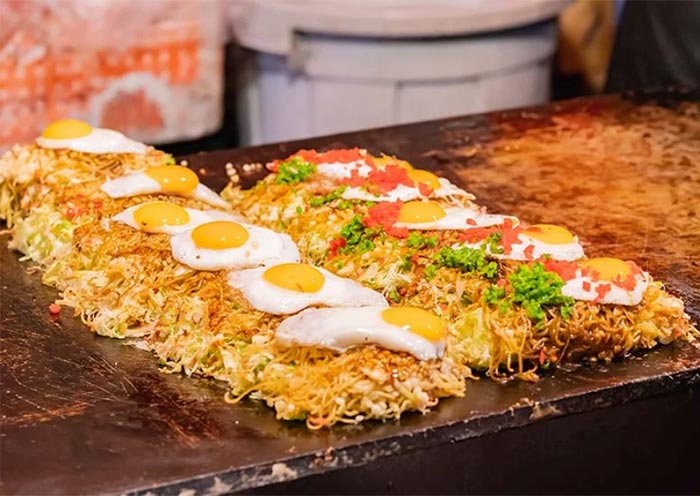
Osaka, Japan's third-largest city and a major economic hub, is renowned for its rich history, diverse cuisine, distinctive culture, and robust economic strength. The city's unique sense of humor and open personality make it an exceptionally interesting place, more colorful than most cities. Acres of concrete are covered with dazzling neon lights and brightly colored storefronts. Osaka is a city that loves to eat, known as the "nation's kitchen." It boasts a wide variety of culinary delights.
Start your day at Osaka Castle Park, one of Japan’s most famous landmarks and a symbol of Osaka’s historical grandeur. Originally built in 1583 by Toyotomi Hideyoshi, a powerful daimyo who aimed to unify Japan, it was the largest castle of its time. After multiple renovations and reconstructions, today's Osaka Castle has been transformed into an open park, covering a total area of 105.6 hectares, making it a must-visit attraction.
Walking into the scenic area of Osaka Castle, you'll be amazed by the massive scale and precision of the moats, gates, and stone walls. The largest stone slab is 11 meters wide, and many stones are inscribed with the crests of the 64 daimyō (feudal lords) tasked with the castle’s construction back in 1620. The most breathtaking feature is the Main Tower (Tenshukaku) of Osaka Castle, which stands tall against the sky at the center of the extensive castle grounds. The castle tower's interior is a museum showcasing artifacts related to Toyotomi Hideyoshi and the castle's history. The observation deck on the 8th floor offers a panoramic view of Osaka Castle Park and the Osaka Plain.
Optional Activity: Take some time to stroll through the Nishinomaru Garden, which offers a picturesque setting with over 600 cherry trees and beautiful views of the castle tower from below. This is especially enchanting during the cherry blossom season, which usually occurs in late March and/or early April.
In the afternoon, you will experience the unique charm of the city through a street food and shopping tour. Enjoy shopping at Shinsaibashi-suji Shopping Street, Osaka's busiest shopping arcade. Then, head to the lively district of Dotonbori, where waterways are lined with luminous advertisements and signs. It's especially glitzy during the holiday season, with decorations strung across the bridges. Full of fantastic restaurants, clubs, and karaoke bars, it's the city's go-to area for entertainment. Take a photo at the iconic Glico Man sign. Try takoyaki, ball-shaped octopus bites, kushikatsu (Japanese deep-fried skewered meat and vegetables), and okonomiyaki, a savory Japanese pancake topped with whatever you like.
Optional Activities:
Kamigata Ukiyoe Museum offers a fascinating glimpse into the traditional Japanese art form of ukiyo-e.
Shinsekai (New World) & Tsutenkaku Tower: Shinsekai, meaning "New World," is a nostalgic and unique shopping district in Osaka, known for its retro vibe, old-school charm, and vibrant atmosphere. Originally built in 1912, Tsutenkaku Tower offers views of the Osaka skyline and is located in the retro-themed Shinsekai area.
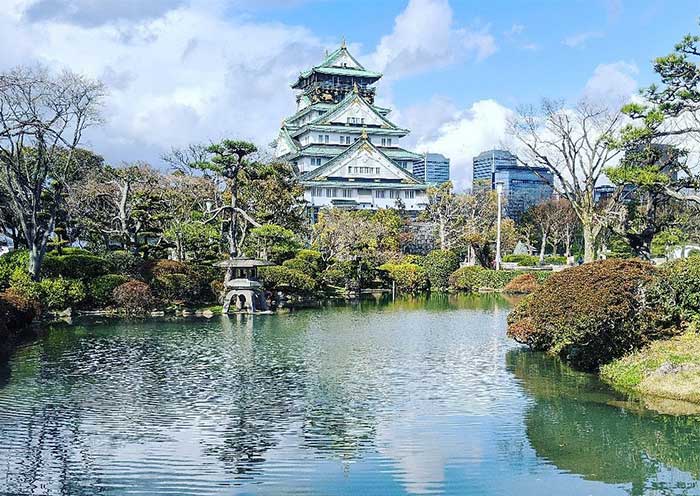
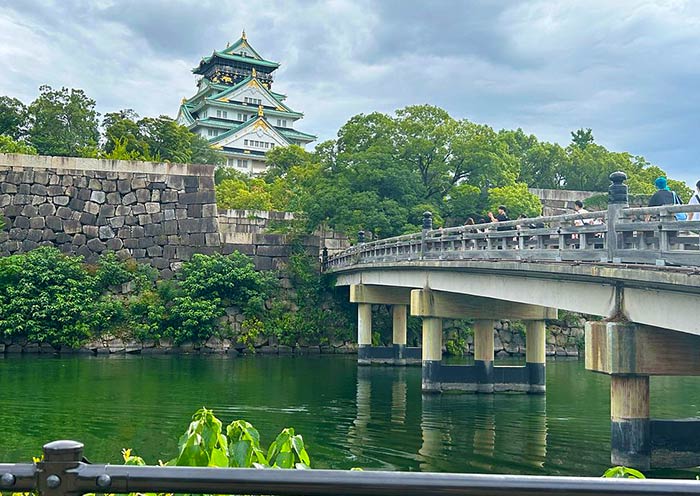
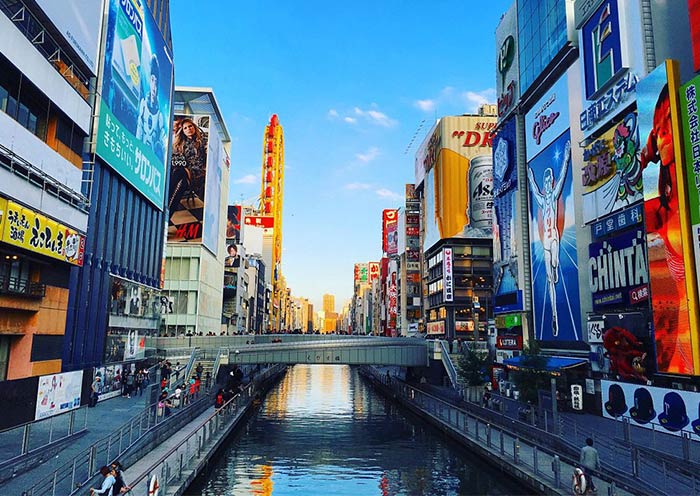
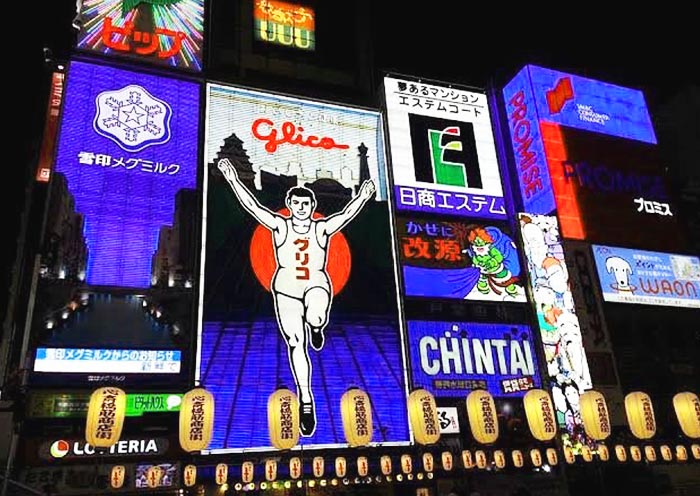
Then, you will depart from Osaka to Nara (takes about 45 minutes). Nara holds a special place in Japanese history as the country's first permanent capital, predating Kyoto. Nara boasts eight World Cultural Heritage sites, making it Japan's second most culturally rich city after Kyoto.
Visit Todaiji Temple, one of Japan's most historically significant temples and a UNESCO World Heritage site. It is known for housing the world’s largest bronze statue of the Buddha Vairocana, which stands just over 16m high and consists of 437 tonnes of bronze and 130kg of gold. It represents Vairocana Buddha and is flanked by two Bodhisattvas. Todaiji's main hall, Daibutsu-den (Big Buddha Hall), is one of the world’s largest all-wood buildings, despite the fact that the present reconstruction of 1692 is only two-thirds of the original temple hall's size.
Walk to Nara Park, adjacent to Kasuga Taisha. This park is famous for its hundreds of freely roaming deer, considered messengers of the gods in Shinto tradition. Purchase some shika senbei (deer crackers) to feed the deer as you stroll through the park.
After the tour, drive to Kyoto to visit Fushimi Inari Taisha Shrine, renowned for its thousands of vermilion torii gates, called Senbon Torii ("thousands of torii gates"). Layers upon layers of vermilion torii gates line the lush, wooded hillside, forming a seemingly endless corridor. The vibrant orange and black gates contrast beautifully with the surrounding greenery, creating a visually stunning and almost otherworldly path that is highly photogenic.
Fushimi Inari Taisha was founded in the early 8th century (711 AD) and is primarily dedicated to Inari, the Shinto god of rice, fertility, sake, agriculture, and industry. As you explore the shrine, you will encounter hundreds of fox statues. Said to be the messengers of the god Inari, who is associated with cereal grains, these fox statues often symbolize the deity. Many of these fox statues are depicted holding a key in their mouths, which is said to open the granary.
Tips: Hiking to the summit of the mountain and back will take two to three hours, but many people go only as far as the Yotsutsuji intersection because there are fewer torii gates beyond this point. It will take 30 to 40 minutes to reach Yotsutsuji.
Stay overnight in Kyoto.
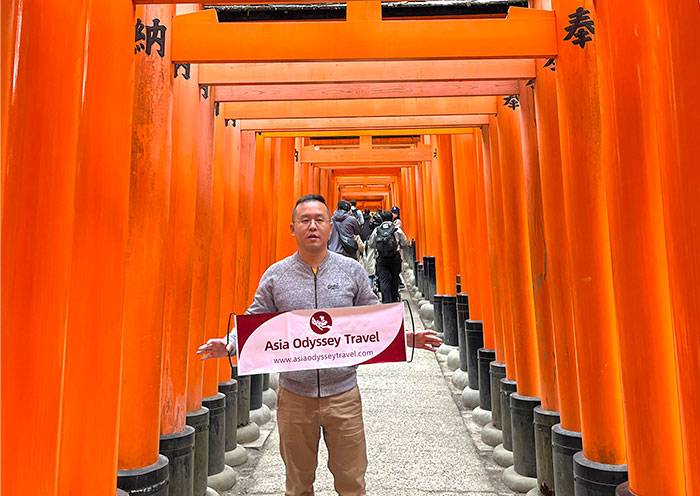
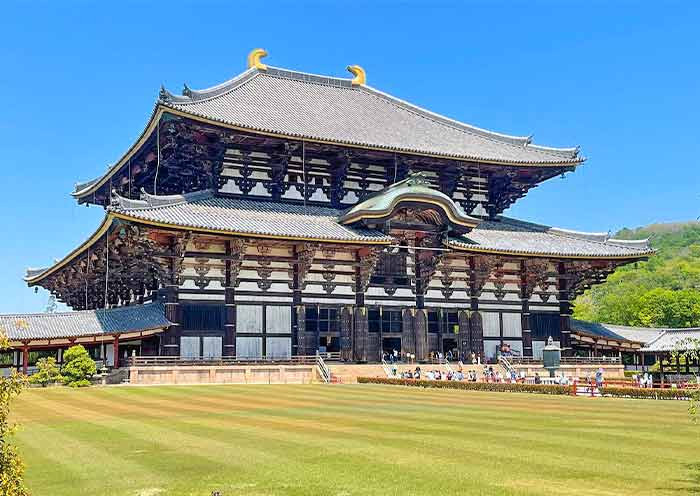
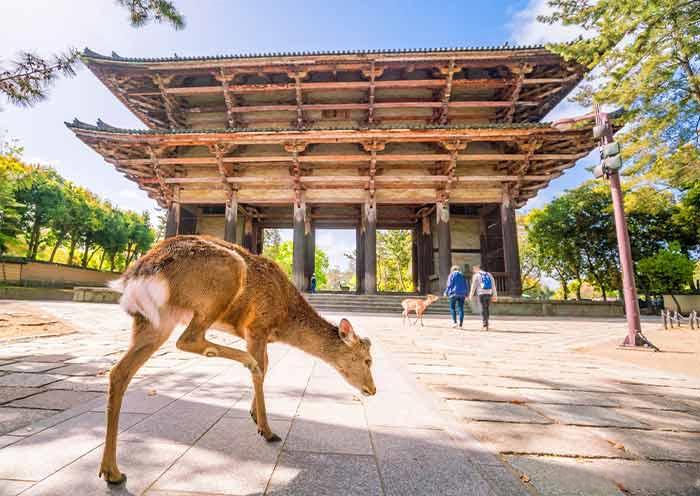
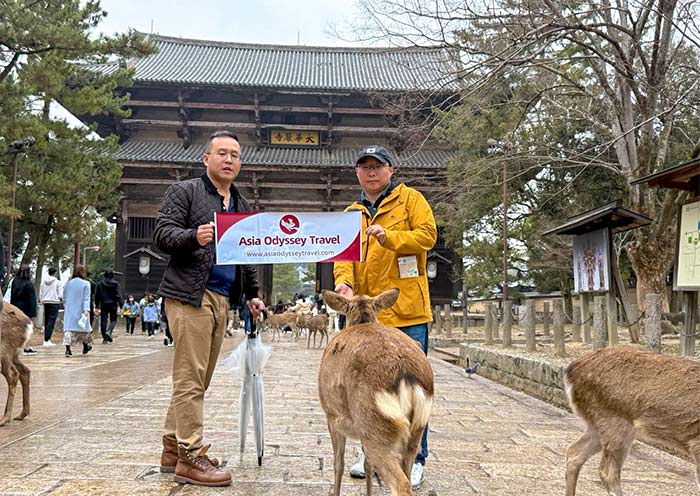
Today, you will experience the rich culture and history of Kyoto, from its ancient temples, shrines, and castles to its vibrant market and traditional district.
Start your day with a visit to one of Kyoto's most iconic sights, Kinkakuji Temple (Golden Pavilion) - a UNESCO World Heritage site. This Zen Buddhist temple is famous for its stunning golden exterior. The temple's stunning visual appeal comes from its top two floors, which are completely covered in gold leaf. The reflection of the golden structure shimmering in the pond in front of it, making it perfect for photos and quiet reflection. It was originally built in 1397 as a retirement villa for Shogun Ashikaga Yoshimitsu. After Yoshimitsu's death, as per his will, the villa was converted into a Zen temple by his son.
Next, make your way to Nishiki Market, often called "Kyoto’s Kitchen." This vibrant market is the perfect place to sample a variety of local dishes, such as cute Japanese sweets wasabi salt, fresh sashimi skewers to tako tamago (small octopus head stuffed with a quail egg on a stick). Enjoy browsing through the stalls and trying different Kyoto delicacies.
After lunch, head to Gion, Kyoto's famous geisha district. Here, you might catch a glimpse of Geisha (Geiko) in their elaborate kimonos and traditional makeup. As you wander through the cobblestone streets of Gion, take a moment to appreciate the beautifully preserved machiya (wooden townhouses), ochaya (teahouses), and exclusive ryotei (traditional Japanese restaurants).
From Gion, a short walk will bring you to Yasaka Shrine, the guardian shrine of the Gion entertainment district, which dates back over 1350 years. Yasaka Shrine is particularly favored by those seeking beauty and wealth. Visiting this significant Shinto shrine in Kyoto, you may also find yourself gaining some good luck. The shrine is most famous for its Gion Matsuri in July, during which you can witness the procession where the deities of Yasaka are paraded through the city streets.
Then, walk up the well-preserved streets of Ninenzaka and Sannenzaka towards Kiyomizu-dera Temple. These charming, sloping streets are lined with traditional shops and quaint tea houses, offering a nostalgic glimpse into Kyoto's past. As you stroll through these areas, you can shop for unique crafts, sample local snacks, and perhaps stop at a café to relax and soak in the atmosphere of old Kyoto.
Your day culminates with a visit to Kiyomizudera Temple, another UNESCO World Heritage Site. Perched on the hillside of Eastern Kyoto, this temple is renowned for its wooden stage that juts out over the hill, providing stunning views of the city and the surrounding nature. The temple's main hall, constructed entirely without the use of nails, is an architectural marvel. Kiyomizu-dera is also celebrated for its sacred waters, which are believed to have wish-granting powers that draw countless visitors who come to drink from its stream. Don’t miss the Hondo (Main Hall), Jishu Shrine, the Otowa Waterfall, and the spiritual experience of the Tainai-Meguri room.
Tips: The scenery at Kiyomizudera Temple is distinctively beautiful in each season, offering a unique charm year-round. In spring, the mountains are adorned with charming cherry blossoms; in summer, they are lush with vibrant greenery; in autumn, they are decorated with brilliantly colored leaves; and in winter, they are filled with enchanting trees.
Stay overnight in Kyoto.
Optional Activities:
- Join a geisha tea ceremony in Kyoto.It offers a chance to see a performance by a geisha, experience the tea ceremony, and learn all about its artful rituals.
- Kyoto traditional kimono experience.Wear a traditional kimono and stroll through scenic districts like Gion or around Kiyomizu-Dera Temple. Enjoy photo opportunities and the feel of traditional Japan.
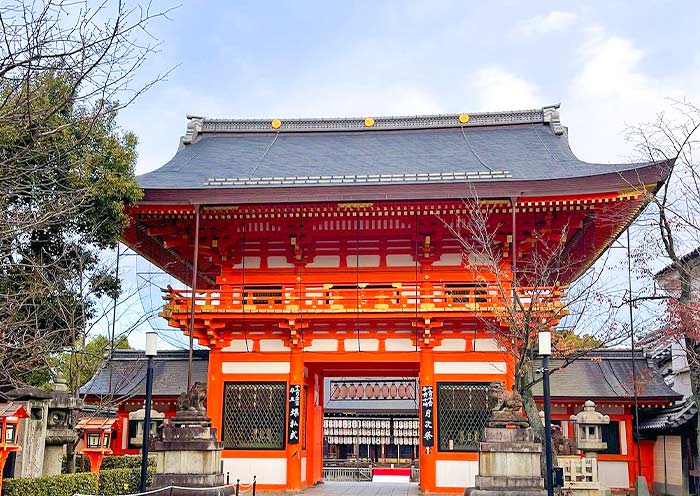
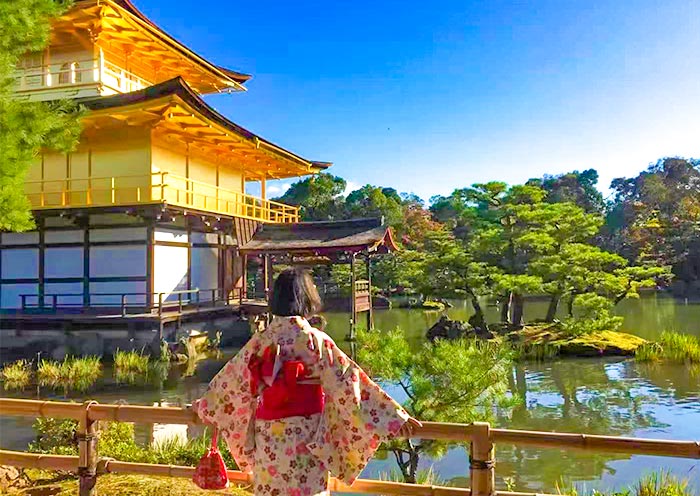
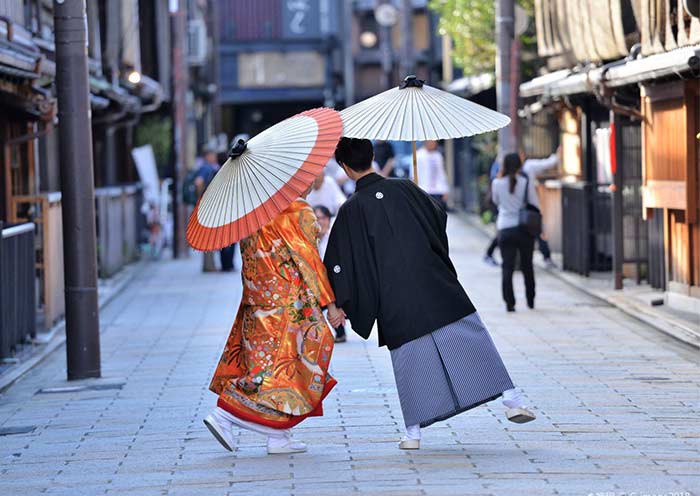
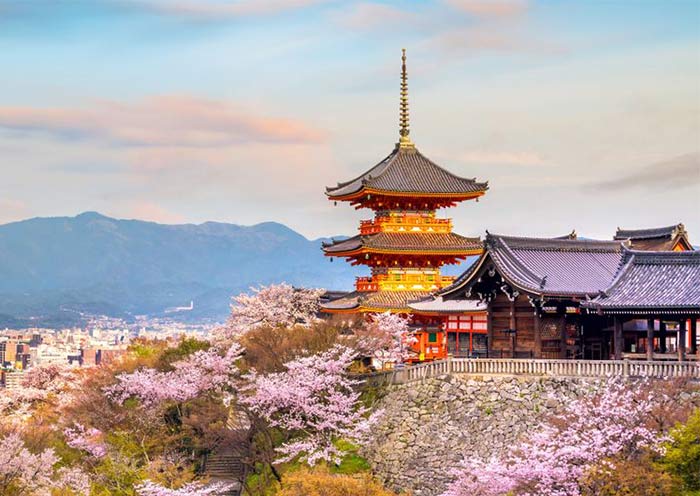
Today, you will take the Shinkansen (bullet train) to Tokyo. A driver will wait for you at the hotel entrance at the scheduled time and transport you to Tokyo Station.
Shinkansen Ride: At Shin-Osaka Station, board the Shinkansen (bullet train) bound for Tokyo Station (about 2.5 hours). This fast and comfortable journey offers a chance to enjoy the changing landscapes of urban and rural Japan.
Upon arrival in Tokyo, a driver holding a sign will wait in the designated area to greet you and provide a private transfer to your hotel. Check into your hotel and take some time to settle in and rest.
Tokyo, the capital of Japan, is one of Japan and Asia's largest economic centers. Tokyo is a hub for Japanese culture and art, with numerous museums, art galleries, theaters, and cultural venues, serving as a vital platform for artistic activities and cultural exchanges. Tokyo stands as a significant base for technological advancement, nurturing numerous high-tech companies and innovative talents, holding leading positions globally in areas like electronics, automotive, and robotics technology.
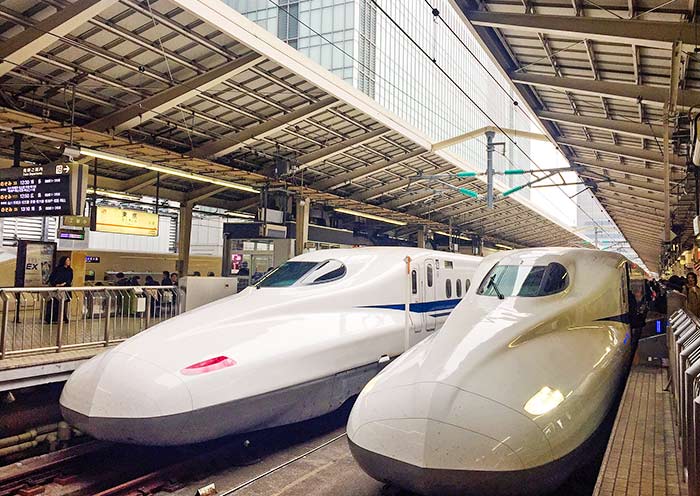
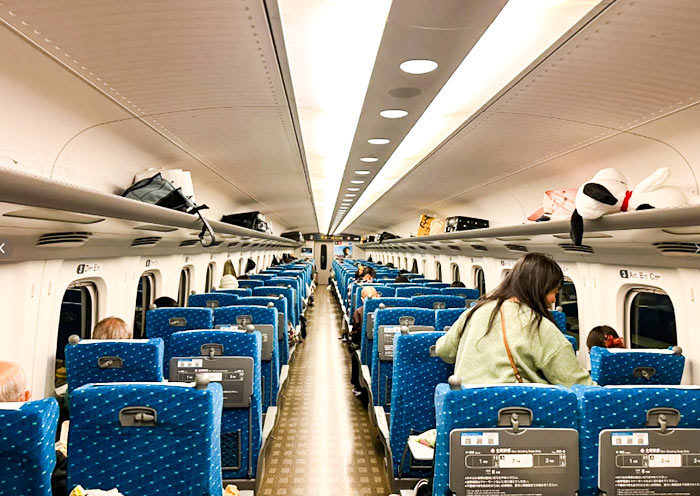
Today, it will be a full-day round trip (300 km) to admire the breathtaking views of Mount Fuji from the Mount Fuji 5th Station, Lake Kawaguchi.
Mount Fuji is the tallest mountain in Japan. It's a famous volcano with a perfectly symmetrical cone shape. Visiting Mount Fuji is essential for any traveler in Japan. As a UNESCO World Heritage Site, Mount Fuji (3,776 m) stands as an iconic symbol of Japan, a cultural and spiritual landmark (recognized as a holy mountain in Shintoism), and a natural marvel. When picturing Mount Fuji, its distinctive perfect cone shape and snow-capped peak likely come to mind. Among the most renowned depictions is Katsushika Hokusai's 'Thirty-Six Views of Mount Fuji'. Hokusai, one of the "Three Greats of Ukiyo-e," is best known for his masterpiece "The Great Wave off Kanagawa."
Start your journey to Mount Fuji 5th Station for a close-up Mount Fuji view. It offers breathtaking panoramic views of Mount Fuji (if weather permits) and the surrounding area, including the Fuji Five Lakes. For those adventurous enough, the 5th Station is the starting point for climbing Mount Fuji. Experience the unique alpine environment and the thrill of being so close to Japan's iconic mountain.
Then, head to Lake Kawaguchi for a leisurely walk along the lakeside. Lake Kawaguchi is renowned for its clear waters that often reflect the majestic Mount Fuji (if weather permits), creating a postcard-perfect scene and making it a popular destination for both domestic and international tourists.
For art lovers, the next stop is the Kubota Itchiku Art Museum, located near Lake Kawaguchi. This unique architectural space houses a collection of beautiful rare kimonos, all designed and created by artist Ichiku Kubota. Ichiku Kubota (1917–2003) was a master textile artist renowned for his exquisitely crafted kimonos. He developed his own complex dyeing techniques, creating intricate patterns and colors inspired by nature, landscapes, and traditional Japanese culture. The tranquil museum setting also offers beautiful views of Mt. Fuji and the lake.
After exploring the museum, choose between two scenic experiences: a cable car ride at Tenjo-san Park or a peaceful cruise on Lake Kawaguchi.
Tenjo-san Park (Cable Car): Take a scenic cable car ride up to the park’s observation area. From the top, you’ll be treated to a stunning 360-degree view of Mt. Fuji, Lake Kawaguchi, and the surrounding countryside.
Alternatively: Lake Kawaguchi Cruise: If you prefer a more tranquil experience, you can opt for a lake cruise on Lake Kawaguchi. This leisurely boat ride offers beautiful views of Mt. Fuji from the water, allowing you to appreciate the landscape from a different perspective.
After that, head back to Tokyo overnight and have a good rest.
Notes:
If the weather is clear, you can enjoy a good view of Mt. Fuji. However, if the weather is not favorable, Mt. Fuji may not be visible.
The best time to view Mount Fuji is generally from Nov. to Feb. when skies are clearer and the peak is snow-capped. Nevertheless, it's important to keep in mind that weather can be unpredictable, and even during these months, there is no guarantee of a clear view.
Early mornings often provide the best visibility before clouds obscure the view. Different locations around Mount Fuji offer varying perspectives, with some spots known for their clear views.

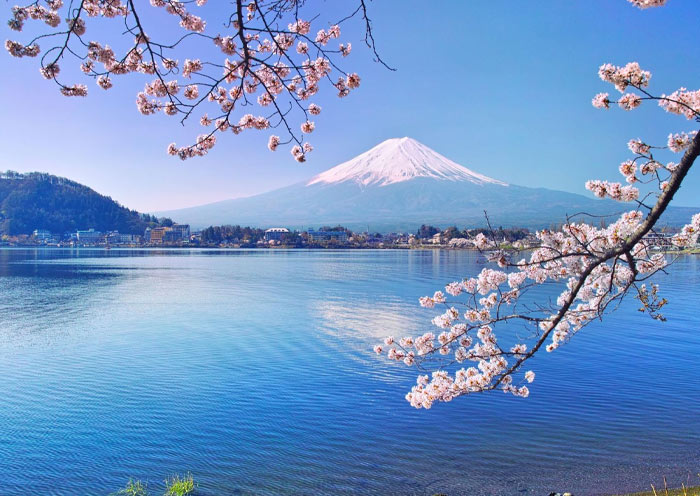
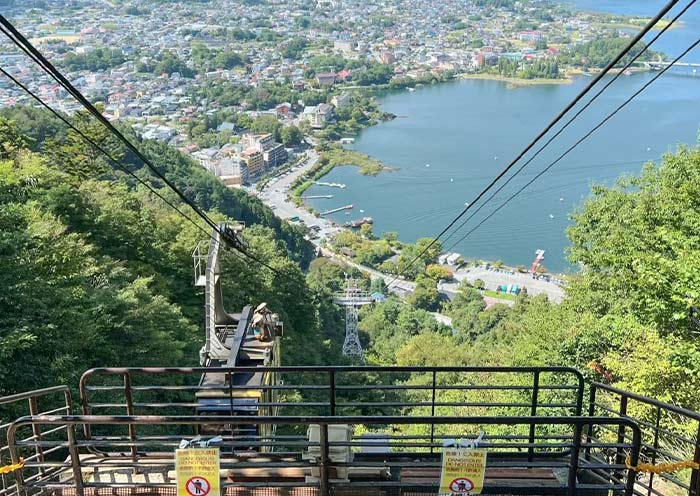
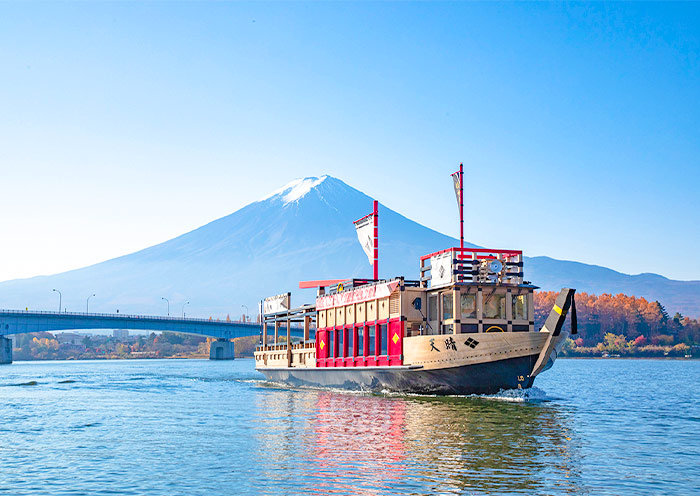
Full day explore Tokyo. You will visit Meiji Jingu Shrine (a Shinto Shrine; meet Japanese Wedding Procession), Shibuya Crossing (Hachiko, the loyal dog Statue), Senso-ji Temple (a Buddhist Temple; view Tokyo Skytree), Tsukiji Outer Market (Tsukiji Fish Market).
First to visit Meiji Jingu Shrine (Meiji Shrine), a Shinto Shrine dedicated to Emperor Meiji (1852-1912) and Empress Shoken (1849-1914), who played a crucial role in modernizing Japan while excelled in writing Waka (traditional Japanese poems of 31 syllables in the pattern 5-7-5-7-7). Meiji Shrine is a popular venue for traditional weddings, where you will have the opportunity to witness a Japanese Wedding Procession, experiencing the charm of Japanese traditional culture.
Founded in 1915 and finished in 1920, Meiji Shrine features a unique architectural style, with the main hall adopting traditional Japanese Shinto Shrine architecture infused with modern elements in its details. You will walk through Japan's Largest Wooden Torii Gate, standing in its natural wooden hue and weighing up to 13 tons. The Torii gate serves as the Symbol of Shinto Shrines, marking the transition from the worldly to the sacred. Walking through this gateway symbolizes stepping into the divine realm, evoking a profound sense of mystery and reverence.
As a peaceful oasis in the city, Meiji Jingu Shrine is the largest green space in the center of Tokyo. In the land-scarce city of Tokyo, the vast area occupied by the Meiji Shrine is truly astonishing! The sacred forest (170,000 trees) surrounding the main shrine buildings of Meiji Jingu is man-made, planted by 110,000 volunteers in honor of their beloved Emperor Meiji (established Shinto as the state religion) and Empress Shoken. The forest serves also to separate the sacred from the profane world.
Take a stroll along the paths and enjoy the fresh air and natural beauty. Then, you will notice the impressive Sake Barrel Wall along the South Approach, which features offerings from sake breweries and believers across Japan, including barrels of sake and Western liquor, reflecting Emperor Meiji's fondness for Western culture. At the main hall of Meiji Shrine, you can witness locals washing their hands and rinsing their mouths at Purification Font before worship as a sign of respect. You can offer a 5-yen coin (symbolizing a connection) like locals and pray for blessings. In the eyes of the Japanese, Meiji Shrine is considered to have such boundless capabilities, from naming ceremonies for newborns, to coming-of-age ceremonies, graduation ceremonies, seek marriage partners, pray for world peace, family well-being, safe travels, good health, warding off calamity, etc. In addition to immersing yourself in Japanese Shinto traditions and architecture, revel in the enchanting surroundings filled with lush trees, serene ponds, graceful bridges, and stone pathways that epitomize the essence of traditional Japanese garden art. You should visit here to enjoy the vibrant bloom of cherry blossoms in spring, the verdant beauty of summer, the fiery hues of autumn leaves, and the serene snowy landscapes of winter.
Tips for Visiting Meiji Jingu Shrine:
1. Wear modest clothing: Respect the sacred nature of the shrine by dressing appropriately.
2. Be mindful of noise levels: Maintain a quiet and respectful atmosphere.
3. Inner Garden (Optional; self-pay; once Imperial Property), and Meiji Jingu Museum (Optional; self-pay; items used by the imperial couple).
Then, move to visit Shibuya Crossing, one of the busiest intersections in the world, accommodating approximately 3,000 people per minute. As one of Tokyo's iconic locations, Shibuya attracts tourists and photographers from around the globe who come to observe and capture its essence. Numerous movies, TV shows, commercials, and music videos are filmed at this location, such as "Detective Chinatown 3" and "The Fast and the Furious: Tokyo Drift." Additionally, the well-known story of Hachiko the Loyal Dog originates here. Hachiko, an Akita dog, continued to visit the station daily to await his deceased owner's return. The Hachiko Statue located in front of Shibuya Station stands as a significant cultural landmark in the Shibuya area, attracting numerous visitors annually who come to pay their respects and honor his loyalty.
In the afternoon, head to Senso-ji Temple (Asakusa Kannon Temple), a must-visit for anyone traveling to Tokyo. Here, you can experience the heart of old Tokyo and its vibrant atmosphere. You can take photos that frame Senso-ji Temple and the Tokyo Skytree;(Japan's Tallest Tower; 634 meters) together.
Senso-ji Temple was built in 628 AD and has a history of over 1300 years, making it one of Japan's oldest temples. It not only witnesses Japan's historical changes but also carries a rich Buddhist culture. The architectural style of Senso-ji Temple blends Japanese traditional culture and art, with rich colors and exquisite carvings. The main buildings include the main gate (Kaminarimon; a landmark of Tokyo), the bell tower, the Five-story Pagoda (a landmark of Tokyo), and the main hall, all reflecting ancient Japanese architectural style and religious beliefs.
Kaminarimon is the iconic structure of Senso-ji Temple, towering at 11.7 meters high and 21.7 meters wide, truly spectacular. Giant Red Lanterns hang in front of the gate, with the words "Kaminarimon" prominently displayed. Kaminarimon is not only a symbol of Senso-ji Temple but also one of Tokyo's most famous landmarks. You may have seen the work of Utagawa Hiroshige, one of the "Three Greats of Ukiyo-e," in his piece "One Hundred Famous Views of Edo: Asakusa Kaminarimon," depicting a snowy scene of the Kaminarimon gate, celebrated for its delicate portrayal and profound imagery, becoming a masterpiece of Ukiyo-e art. The area is bustling, and crowded with people coming to pray and seek blessings for health, peace, and happiness. Around Senso-ji Temple, you can taste various Japanese cuisines, purchase unique souvenirs, and participate in various celebratory activities.
After that, you can explore Tsukiji Fish Market (Now Toyosu Market). Tsukiji Fish Market was once the world's largest fish market, famous for its tuna auctions. However, in 2018, it relocated to a new, larger facility called Toyosu Market. You can still enjoy fresh seafood (sashimi, sushi, or seafood rice bowls), purchase kitchenware, and learn about a variety of seafood, including the characteristics, cooking methods, and nutritional value of different types of seafood.
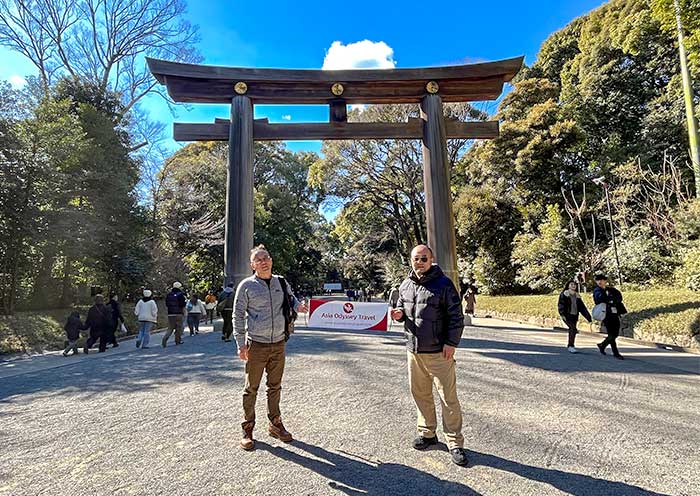
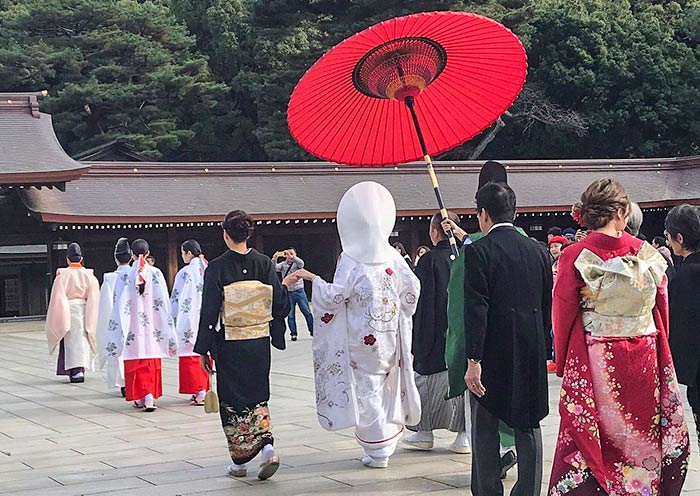

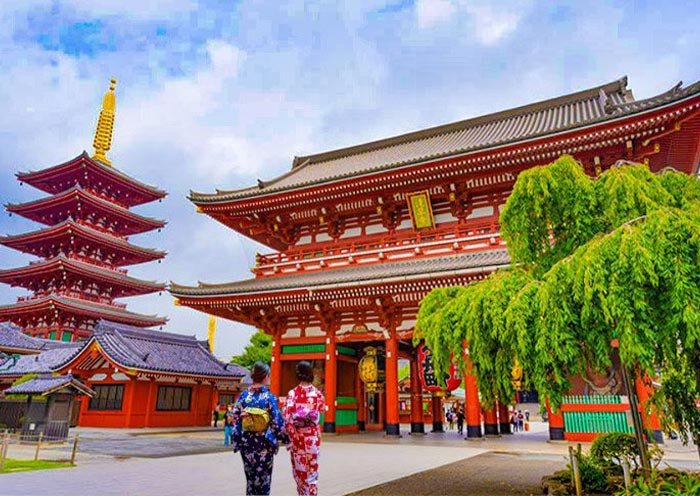
It is time to end your unforgettable 26 Days Vietnam China Japan Tour. Your driver will ensure a smooth transfer to Tokyo Narita Airport (NRT) or Tokyo Haneda Airport (HND) for your departure flight.
Trip Extension: If you'd like to extend your adventures in Japan, consider exploring other notable regions like Kobe, Hakone, etc. Feel free to contact us to customize your extended itinerary.
Thank you for choosing Asia Odyssey Travel for your tour of Asia. We are dedicated to enhancing your travel experiences and look forward to welcoming you on your next adventure in Asia. Have a safe journey home!
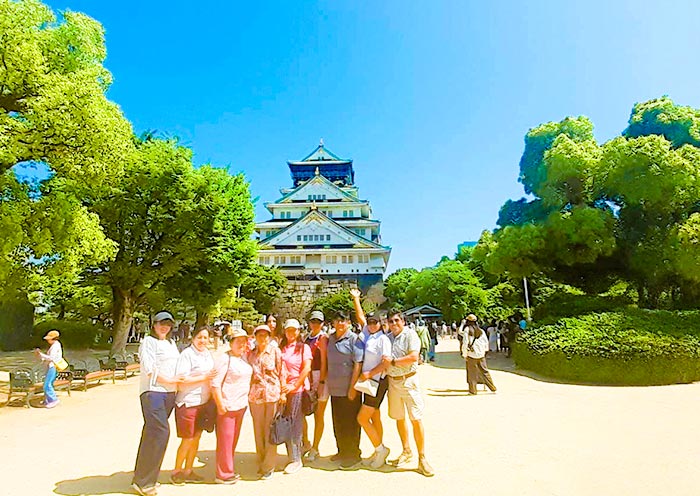
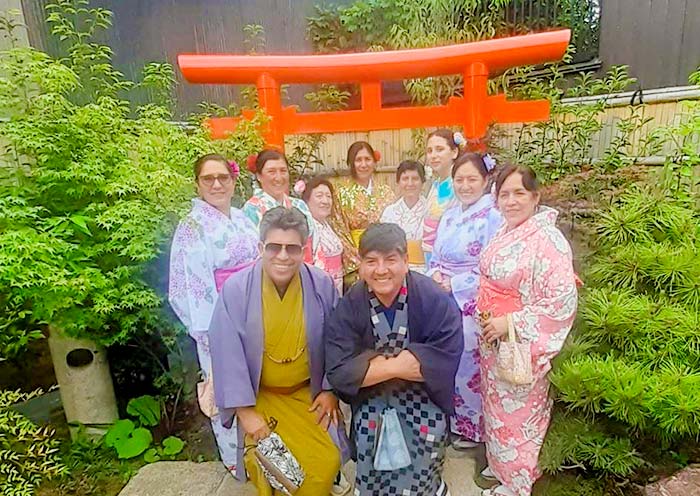
Price: What’s Included & What’s Excluded
What's Included:
What's Excluded:
Hotel Conditions for Your Asia Tour
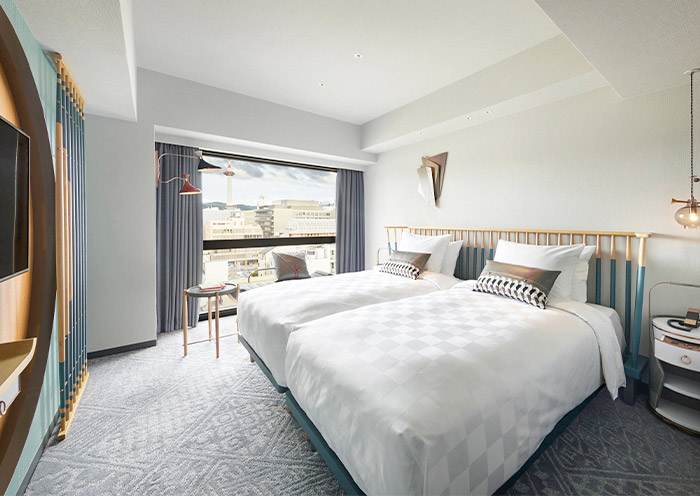

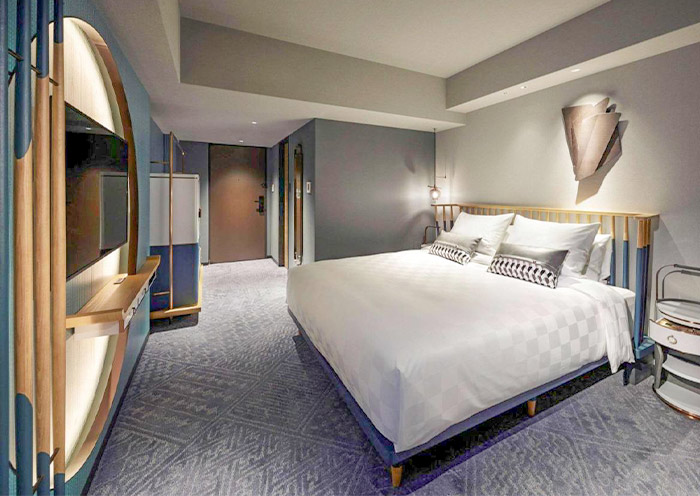
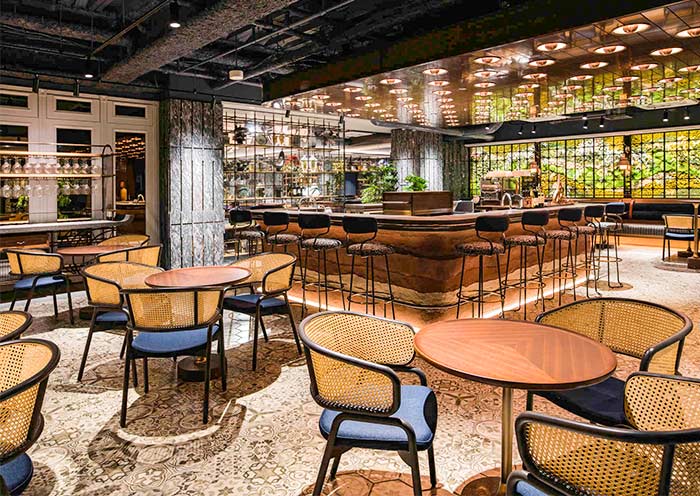
We offer a range of accommodation options to suit various preferences and budgets: luxurious 5-star hotels, comfortable 4-star hotels, and economical 3-star hotels. Our selected hotels are conveniently located close to the city center or popular tourist spots.
If you have specific needs or preferences, please consult with your travel advisor.
Photo Gallery for This Itinerary
Price: request
(Based on a private tour for two people. Price varies depending on program, travel date, number of people.)
Free Enquiry! You don’t need to pay for the reservation.
- United States (+1)
- Australia (+61)
- Singapore (+65)
- Malaysia (+60)
- Philippines (+63)
- Canada (+1)
- Italy (+39)
- Indonesia (+62)
- United Kingdom (+44)
- Spain (+34)
- Mexico (+52)
- Hong Kong (+852)
- Thailand (+66)
- United Arab Emirates (+971)
- New Zealand (+64)
- South Africa (+27)
- Germany (+49)
- Brazil (+55)
- India (+91)
- France (+33)
- Vietnam (+84)
- The Netherlands (+31)
- Saudi Arabia (+966)
- Ireland (+353)
- Argentina (+54)
- Switzerland (+41)
- Romania (+40)
- Pakistan (+92)
- Japan (+81)
- Portugal (+351)
- Bangladesh (+880)
- South Korea (+82)
- Puerto Rico (+1)
- Türkiye (+90)
- China (+86)
- Belgium (+32)
- Qatar (+974)
- Greece (+30)
- Taiwan (+886)
- Austria (+43)
- Poland (+48)
- Israel (+972)
- Chile (+56)
- Sri Lanka (+94)
- Nigeria (+234)
- Peru (+51)
- Colombia (+57)
- Hungary (+36)
- Nepal (+977)
- Denmark (+45)
- Bulgaria (+359)
- Norway (+47)
- Slovenia (+383)
- Sweden (+46)
- Kuwait (+965)
- Costa Rica (+506)
- Ecuador (+593)
- Venezuela (+58)
- Malta (+356)
- Croatia (+385)
- Tunisia (+216)
- Czechia (+420)
- Mongolia (+976)
- Bahrain (+973)
- Mauritius (+230)
- Papua New Guinea (+675)
- Cambodia (+855)
- Dominican Republic (+1)
- Luxembourg (+352)
- Finland (+358)
- Guatemala (+502)
- Myanmar (+95)
- Maldives (+960)
- Slovakia (+421)
- Laos (+856)
- Serbia (+381)
- Brunei (+673)
- Oman (+968)
- Macao (+853)
- Panama (+507)
- Morocco (+212)
- Jordan (+962)
- Georgia (+995)
- Fiji (+679)
- Bolivia (+591)
- Lithuania (+370)
- Bahamas (+1)
- Cyprus (+357)
- Latvia (+371)
- Bhutan (+975)
- Iraq (+964)
- Iran (+98)
- Kenya (+254)
- Jamaica (+1)
- Zimbabwe (+263)
- Azerbaijan (+994)
- Uruguay (+598)
- Estonia (+372)
- Andorra (+376)
- Cameroon (+237)
- Ghana (+233)
- Kazakhstan (+7)
- Nicaragua (+505)
- Egypt (+20)
- Russia (+7)
- Albania (+355)
- Réunion (+262)
- Montenegro (+382)
- Algeria (+213)
- Afghanistan (+93)
- Martinique (+596)
- Uganda (+256)
- Honduras (+504)
- North Macedonia (+389)
- Trinidad and Tobago (+1)
- Suriname (+597)
- Antigua and Barbuda (+1)
- Zambia (+260)
- Ukraine (+380)
- Armenia (+374)
- Barbados (+1)
- Belarus (+375)
- Palestine (+970)
- Lesotho (+266)
- Moldova (+373)
- Ethiopia (+251)
- French Polynesia (+689)
- Gambia (+220)
- Guam (+1)
- Gibraltar (+350)
- Isle of Man (+44)
- New Caledonia (+687)
- El Salvador (+503)
- Comoros (+269)
- Seychelles (+248)
- Chad (+235)
- Samoa (+685)
- Cook Islands (+682)
- Palau (+680)
- Paraguay (+595)
- DR Congo (+243)
- Solomon Islands (+677)
